
Central European Journey through Switzerland, Germany, Austria and the Czech Republic
 21 Day Tour of Zurich, Interlaken, Munich, Salzburg, Vienna, Cesky Krumlov and Prague
21 Day Tour of Zurich, Interlaken, Munich, Salzburg, Vienna, Cesky Krumlov and Prague
Overview
Trip Map
Itinerary
Inclusions
Reviews







21 Days 20 Nights
Best Time: Jan-Dec
Exploring Scenic Countryside
Nature Lovers
Explore Central Europe's rich history, culture, and scenic vistas with Go Real Travel’s detailed itinerary and handy mobile app. Start in Zurich, Switzerland, then take in the majestic Alps from Interlaken. Continue to Munich, Germany, to wander Nymphenburg Palace and the English Gardens. Board a train to Salzburg, Mozart's city, before venturing into the Bavarian Alps and Berchtesgaden. After spending four nights in elegant Vienna, head to the Czech Republic. Marvel at Český Krumlov's breathtaking views, then conclude in Prague, one of Europe's most stunning cities.
- Enjoy private guided tours in Zurich, Munich, Salzburg, Vienna, and Prague.
- Set out on an exciting journey by train to the Jungfraujoch to Europe’s highest rail station.
- Experience the best of classical music at one of the fine concert halls in Salzburg or Vienna.
- Sip delicious wine at the famous wine village of Grinzing with a charming countryside vibe.
- Enjoy beautiful views of Prague Castle and its Old Town from the observation tower in Petřín Park.
Explore Central Europe's rich history, culture, and scenic vistas with Go Real Travel’s detailed itinerary and handy mobile app. Start in Zurich, Switzerland, then take in the majestic Alps from Interlaken. Continue to Munich, Germany, to wander Nymphenburg Palace and the English Gardens. Board a train to Salzburg, Mozart's city, before venturing into the Bavarian Alps and Berchtesgaden. After spending four nights in elegant Vienna, head to the Czech Republic. Marvel at Český Krumlov's breathtaking views, then conclude in Prague, one of Europe's most stunning cities.
- Enjoy private guided tours in Zurich, Munich, Salzburg, Vienna, and Prague.
- Set out on an exciting journey by train to the Jungfraujoch to Europe’s highest rail station.
- Experience the best of classical music at one of the fine concert halls in Salzburg or Vienna.
- Sip delicious wine at the famous wine village of Grinzing with a charming countryside vibe.
- Enjoy beautiful views of Prague Castle and its Old Town from the observation tower in Petřín Park.

Fraumunster
Churches & Monasteries

Lake Zurich
Natural Beauty

Unterseen
Small Towns

Interlaken Monastery & Castle
Castles & Chateaux

Old Town
Architecture

Hohensalzburg Fortress
Castles & Chateaux

Schönbrunn Palace & Zoo
Parks & Gardens

Town Square
Architecture

Prague Castle
Castles & Chateaux
Must see sights

Fraumunster
Churches & Monasteries

Lake Zurich
Natural Beauty

Unterseen
Small Towns

Interlaken Monastery & Castle
Castles & Chateaux

Old Town
Architecture

Hohensalzburg Fortress
Castles & Chateaux

Schönbrunn Palace & Zoo
Parks & Gardens

Town Square
Architecture

Prague Castle
Castles & Chateaux
Starting from
$5199
per person
 Not included
Not included Secure Your Customizable Trip
Enter your details to embark on a journey that can be tailored just for you.
Start
Travelers
0 travelers
Add Room
Remove Room
Preferred Hotel Stars
Select Hotel Stars
Craft Your Own Itinerary
Select your interests and destinations for a trip plan inspired by you.
Peaks & Palaces in Central Europe Trip - Map & Itinerary
Enable/Disable Map Scrolling
Click To Make Map Interactive

Peaks & Palaces in Central Europe Trip Timeline
 Edit Details
Edit DetailsArrival
2 nights
Zurich
Switzerland
Train: 1h
Train: 1h
3 nights
Interlaken
Switzerland
Train: 2h
Train: 4h
3 nights
Munich
Germany
Train: 2h
4 nights
Salzburg
Austria
Train: 2.5h
4 nights
Vienna
Austria
Shuttle: 5h30m
1 nights
Cesky Krumlov
Czech Republic
Bus: 3h
3 nights
Prague
Czech Republic
Departure
Day-By-Day Itinerary of Peaks & Palaces in Central Europe Trip

Day 1
Arrive Zurich
Day 1
Arrive Zurich



To Be Determined
Zurich Airport Pickup
We will schedule a pick up for 20 minutes after your flight's arrival time. You will be met in the terminal by an English speaking driver holding a sign with your name on it. The ride is for your party only - you will not be sharing a vehicle. The cost of the ride will be included in your itinerary package.

Day 1
Arrive Zurich


Day 1
Arrive Zurich




To Be Determined:
Zurich Airport Pickup
Mid-Day/Afternoon:
West Bank, Self-Guided
Late Afternoon/Early Evening:
East Bank, Self Guided


Day 2
Zurich
Day 2
Zurich



9:00 AM - 9:30 AM
Old Town Zurich Tour
During this 2.5-hour private walking tour, you will learn how Switzerland became Switzerland, and why Zurich is its most populated and important city. The walk towards the lake will take you to the Lindenhof, where you will enjoy a marvelous view of the Limmat all the way over to the Grossmünster. From there you will head to the Fraumünster, passing by St. Peter's Church, which bears the biggest clock face in Europe. Passing by the side of the city's Grossmünster, you will walk from the Lake to the Niederdorfstrasse, where you will experience the focal point of Zurich's restaurants and bars.

Day 2
Zurich



Day 3
Zurich to Interlaken
Day 3
Zurich to Interlaken




Morning to Late Afternoon
Lucerne
Experience Lucerne's breathtakingly beautiful city steeped in history and framed at one end by Switzerland's most stunning and dramatic body of water, known as the "Lake of the Four Forest Cantons", where paddle steamers ply the waters between the lake's resort towns.

Ritterscher Palace
Built in 1557 as a private mansion, but now hosting Lucerne's cantonal government
Show More

Kapellbrücke (Chapel Bridge)
Iconic wooden bridge with a roof decorated with 17th century art
Show More

Ritterscher Palace
Built in 1557 as a private mansion, but now hosting Lucerne's cantonal government
Show More

Kapellbrücke (Chapel Bridge)
Iconic wooden bridge with a roof decorated with 17th century art
Show More

Ritterscher Palace
Built in 1557 as a private mansion, but now hosting Lucerne's cantonal government
Show More

Kapellbrücke (Chapel Bridge)
Iconic wooden bridge with a roof decorated with 17th century art
Show More
prev
next

Day 3
Zurich to Interlaken


Ritterscher Palace
 Highlight of Lucerne
Highlight of LucerneBuilt in 1557 as a private mansion, but now hosting Lucerne's cantonal government
Built in 1557 as a private mansion, but now hosting Lucerne's cantonal government

Kapellbrücke (Chapel Bridge)
 Highlight of Lucerne
Highlight of LucerneIconic wooden bridge with a roof decorated with 17th century art
Astonishing 170 meter-long, wooden Kapellbrücke (Chapel Bridge), which connects the Old Town, on the right bank, to the “New Town,” on the left. It also served as a defensive bastion against attacks from Lake Lucerne to the south. Built in 1333, and named after the tiny nearby 18th century St Peterskapelle

Ritterscher Palace
 Highlight of Lucerne
Highlight of LucerneBuilt in 1557 as a private mansion, but now hosting Lucerne's cantonal government
Built in 1557 as a private mansion, but now hosting Lucerne's cantonal government

Kapellbrücke (Chapel Bridge)
 Highlight of Lucerne
Highlight of LucerneIconic wooden bridge with a roof decorated with 17th century art
Astonishing 170 meter-long, wooden Kapellbrücke (Chapel Bridge), which connects the Old Town, on the right bank, to the “New Town,” on the left. It also served as a defensive bastion against attacks from Lake Lucerne to the south. Built in 1333, and named after the tiny nearby 18th century St Peterskapelle

Ritterscher Palace
 Highlight of Lucerne
Highlight of LucerneBuilt in 1557 as a private mansion, but now hosting Lucerne's cantonal government
Built in 1557 as a private mansion, but now hosting Lucerne's cantonal government

Kapellbrücke (Chapel Bridge)
 Highlight of Lucerne
Highlight of LucerneIconic wooden bridge with a roof decorated with 17th century art
Astonishing 170 meter-long, wooden Kapellbrücke (Chapel Bridge), which connects the Old Town, on the right bank, to the “New Town,” on the left. It also served as a defensive bastion against attacks from Lake Lucerne to the south. Built in 1333, and named after the tiny nearby 18th century St Peterskapelle
prev
next


Day 4
Interlaken
Day 4
Interlaken

Early Morning to Late Afternoon
Jungfrau
Journey directly through the famous Eiger Mountain to what the Swiss called "The Top of Europe", the icy, windswept gap in the mountain ridges known as Jungfraujoch at 3,454m/11,332ft just below the summit of Jungfrau. The train ride to the top is not cheap, but it's the highest train station in Europe and definitely an unforgettable experience.

Grindelwald
Village in the Bernese Alps
Show More

Grindelwald
Village in the Bernese Alps
Show More

Grindelwald
Village in the Bernese Alps
Show More

Grindelwald
Village in the Bernese Alps
Show More

Grindelwald
Village in the Bernese Alps
Show More
prev
next

Day 4
Interlaken


Grindelwald
 Highlight of Jungfrau
Highlight of JungfrauVillage in the Bernese Alps
Village in the Bernese Alps that is considered to be the gateway to the Jungfrau Region. This village is popular among hikers and alpinists

Grindelwald
 Highlight of Jungfrau
Highlight of JungfrauVillage in the Bernese Alps
Village in the Bernese Alps that is considered to be the gateway to the Jungfrau Region. This village is popular among hikers and alpinists

Grindelwald
 Highlight of Jungfrau
Highlight of JungfrauVillage in the Bernese Alps
Village in the Bernese Alps that is considered to be the gateway to the Jungfrau Region. This village is popular among hikers and alpinists

Grindelwald
 Highlight of Jungfrau
Highlight of JungfrauVillage in the Bernese Alps
Village in the Bernese Alps that is considered to be the gateway to the Jungfrau Region. This village is popular among hikers and alpinists

Grindelwald
 Highlight of Jungfrau
Highlight of JungfrauVillage in the Bernese Alps
Village in the Bernese Alps that is considered to be the gateway to the Jungfrau Region. This village is popular among hikers and alpinists
prev
next


Day 5
Interlaken
Day 5
Interlaken


Morning to Afternoon
Excursion to Schilthorn
Discover the evil Blofeld's mountain top hideaway, Piz Gloria, from the film location for the James Bond film, On Her Majesty's Secret Service, by traveling to the Schilthorn summit on a jaw-dropping cable car ride via the winter resort of Mürren. Stop off at the Birg gondola station along the way to try out the hair-raising, glass-floored "thrill walk".

Mürren
Show More
Show More


Lauterbrunnen
Picturesque Swiss town
Show More

Piz Gloria
Revolving restaurant
Show More

Mürren
Show More
Show More


Lauterbrunnen
Picturesque Swiss town
Show More

Piz Gloria
Revolving restaurant
Show More

Mürren
Show More
Show More

prev
next

Day 5
Interlaken


Mürren
 Highlight of Excursion to Schilthorn
Highlight of Excursion to Schilthorn

Lauterbrunnen
 Highlight of Excursion to Schilthorn
Highlight of Excursion to SchilthornPicturesque Swiss town

Piz Gloria
 Highlight of Excursion to Schilthorn
Highlight of Excursion to SchilthornRevolving restaurant
The revolving restaurant on the peak of Schilthorn that was featured in the James Bond film 'On Her Majesty's Secret Service'

Mürren
 Highlight of Excursion to Schilthorn
Highlight of Excursion to Schilthorn

Lauterbrunnen
 Highlight of Excursion to Schilthorn
Highlight of Excursion to SchilthornPicturesque Swiss town

Piz Gloria
 Highlight of Excursion to Schilthorn
Highlight of Excursion to SchilthornRevolving restaurant
The revolving restaurant on the peak of Schilthorn that was featured in the James Bond film 'On Her Majesty's Secret Service'

Mürren
 Highlight of Excursion to Schilthorn
Highlight of Excursion to Schilthorn
prev
next

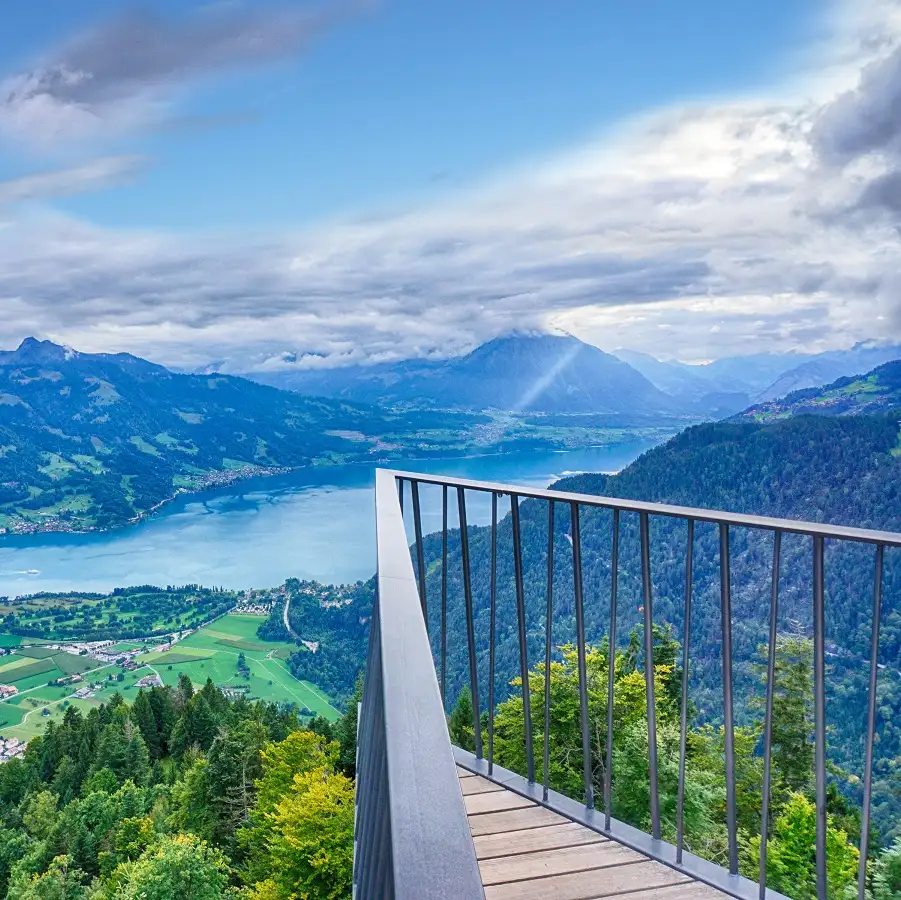
Day 6
Interlaken to Munich
Day 6
Interlaken to Munich




Morning/Mid-Day
Harder Kulm Funicular
Travel by funicular from close to the Old Town in Interlaken to the Harder Kulm viewing platform at 1,322 meters above sea level from where you're able to soak up majestic panoramas of Lake Brienz and Lake Thun, or admire the Eiger, Mönch, and Jungfrau mountains. The castle-like the Harder Kulm Panorama Restaurant sometimes hosts folk music and dancing. The hike down, should you choose to go that way, will take around one hour.

Day 6
Interlaken to Munich



Day 7
Munich
Day 7
Munich



9:00 AM - 11:30 AM
Guided Walk Tour of Historic Munich
Munich contains many reminders of a long and varied history but also encompasses the modern features of a strong and vibrant city. The insights of a local help make sense of the traditions, trends, and promises of Bavaria's Capital - sometimes referred to as the city of laptops and lederhosen. On this tour, your guide will show you the highlights of Munich and point out the many hidden treasures.

Day 7
Munich


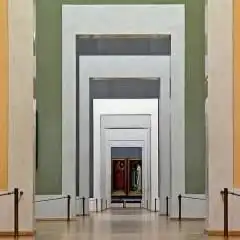
Day 8
Munich
Day 8
Munich



Morning/Mid-Day
Arts District
Munich's Museum Quarter (Kunstareal) has grown continuously over a period of 200 years offering an extraordinary variety of museums with works from Pharaonic Egypt right through to the present day. There are 18 museums and exhibition halls, more than 40 galleries, six internationally renowned universities and numerous cultural institutions all in close proximity and within walking distance of each other.

Pinakothek der Moderne
Peruse 19th and 20th century art in a stylishly modern setting.
Show More

Museum Brandhorst
Peruse modern art in this remarkably different building.
Show More

State Museum of Egyptian Art
History buffs will love this underappreciated museum dedicated to Egyptian archaeology.
Show More

Alte Pinakothek
Enjoy a tremendous collection of art in what was once the world's largest art gallery.
Show More

Neue Pinakothek
See some of the 19th and early 20th centuries' greatest artworks.
Show More

Pinakothek der Moderne
Peruse 19th and 20th century art in a stylishly modern setting.
Show More

Museum Brandhorst
Peruse modern art in this remarkably different building.
Show More

State Museum of Egyptian Art
History buffs will love this underappreciated museum dedicated to Egyptian archaeology.
Show More

Alte Pinakothek
Enjoy a tremendous collection of art in what was once the world's largest art gallery.
Show More

Neue Pinakothek
See some of the 19th and early 20th centuries' greatest artworks.
Show More

Pinakothek der Moderne
Peruse 19th and 20th century art in a stylishly modern setting.
Show More
prev
next

Day 8
Munich


Pinakothek der Moderne
 Highlight of Arts District
Highlight of Arts DistrictPeruse 19th and 20th century art in a stylishly modern setting.
The strikingly clean-lined Pinakothek der Moderne, gathers its eclectic collection of classic modern and contemporary art, design and architecture around a central rotunda. On the west side of the building are works representing last century's key artistic movements, from Cubism through to Surrealism and beyond. The east wing is devoted to contemporary art.

Museum Brandhorst
 Highlight of Arts District
Highlight of Arts DistrictPeruse modern art in this remarkably different building.
The Museum Brandhorst is an eye-catching structure covered with 36,000 polychromatic ceramic rods in 23 custom colors and a second layer consisting of a horizontally folded metal skin, coated in two colors. This layering and its polychromy lend the skin a varied appearance: What is vivid and three-dimensional from close up appears homogeneous and flat from afar. It was opened in 2009 to house a collection of German and modern art in a setting of restrained, spacious modernism. Its rotating exhibits include works by Andy Warhol, Jeff Koons, and Picasso, as well as major contemporary German artists.

State Museum of Egyptian Art
 Highlight of Arts District
Highlight of Arts DistrictHistory buffs will love this underappreciated museum dedicated to Egyptian archaeology.
The impressive entrance to the brand spanking new State Museum of Egyptian Art is reminiscent of a grand descent into a Pharoah's tomb. Opened in 2013 to house artifacts formerly contained in the Residenz, the museum has a collection which spans 5000 years of Egyptian history.

Alte Pinakothek
 Highlight of Arts District
Highlight of Arts DistrictEnjoy a tremendous collection of art in what was once the world's largest art gallery.
The largest art gallery in the world when it was first opened in 1836, the Alte Pinakothek can still be an overwhelming experience: the collections, which are based on the royal collection of the Wittelsbach dynasty over five hundred years, are arranged geographically and chronologically, encompassing German, Dutch, Flemish, Spanish, French and Italian art, with a timespan from the Middle Ages to the 18th century. It houses the largest collection of Rubens in the world, so be sure to stop by the Flemish paintings. Also worthy of particular attention if you're short on time are the richly comic works by Pieter Brueghel in the Netherlandish collection, and the German late Gothic and Renaissance art collection represented by the likes of Albrecht Dürer and Cranach the Elder.
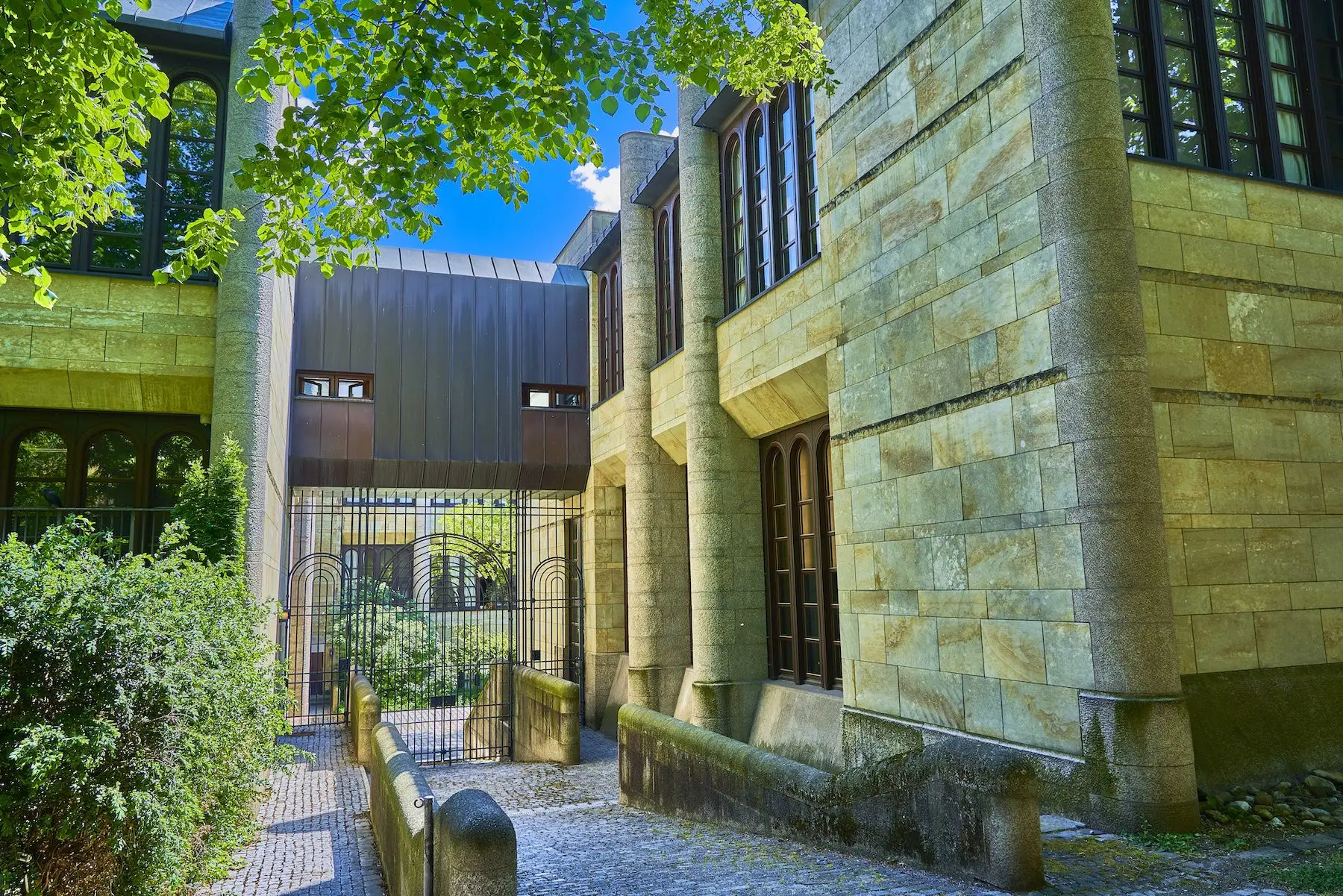
Neue Pinakothek
 Highlight of Arts District
Highlight of Arts DistrictSee some of the 19th and early 20th centuries' greatest artworks.
Directly across the road from Alte Pinakothek, the Neue Pinakothek picks up where the older museum leaves off, concentrating on art from the 19th century to Jugendstil. The audio-guide tour starts with art from around 1800, prominent among which are a number of canvases by Goya, before progressing to English painting from the likes of Gainsborough, Constable, and Turner. Much of the rest of the museum is given over to German Art, with an emphasis on artists active in the court of Ludwig I, such as work by the architect who designed the Alte Pinakothek, Leo von Klenze, and the Berlin architect Karl Friedrich Schinkel. There are also works by Caspar David Friedrich and Adolph von Menzel.

Pinakothek der Moderne
 Highlight of Arts District
Highlight of Arts DistrictPeruse 19th and 20th century art in a stylishly modern setting.
The strikingly clean-lined Pinakothek der Moderne, gathers its eclectic collection of classic modern and contemporary art, design and architecture around a central rotunda. On the west side of the building are works representing last century's key artistic movements, from Cubism through to Surrealism and beyond. The east wing is devoted to contemporary art.

Museum Brandhorst
 Highlight of Arts District
Highlight of Arts DistrictPeruse modern art in this remarkably different building.
The Museum Brandhorst is an eye-catching structure covered with 36,000 polychromatic ceramic rods in 23 custom colors and a second layer consisting of a horizontally folded metal skin, coated in two colors. This layering and its polychromy lend the skin a varied appearance: What is vivid and three-dimensional from close up appears homogeneous and flat from afar. It was opened in 2009 to house a collection of German and modern art in a setting of restrained, spacious modernism. Its rotating exhibits include works by Andy Warhol, Jeff Koons, and Picasso, as well as major contemporary German artists.

State Museum of Egyptian Art
 Highlight of Arts District
Highlight of Arts DistrictHistory buffs will love this underappreciated museum dedicated to Egyptian archaeology.
The impressive entrance to the brand spanking new State Museum of Egyptian Art is reminiscent of a grand descent into a Pharoah's tomb. Opened in 2013 to house artifacts formerly contained in the Residenz, the museum has a collection which spans 5000 years of Egyptian history.

Alte Pinakothek
 Highlight of Arts District
Highlight of Arts DistrictEnjoy a tremendous collection of art in what was once the world's largest art gallery.
The largest art gallery in the world when it was first opened in 1836, the Alte Pinakothek can still be an overwhelming experience: the collections, which are based on the royal collection of the Wittelsbach dynasty over five hundred years, are arranged geographically and chronologically, encompassing German, Dutch, Flemish, Spanish, French and Italian art, with a timespan from the Middle Ages to the 18th century. It houses the largest collection of Rubens in the world, so be sure to stop by the Flemish paintings. Also worthy of particular attention if you're short on time are the richly comic works by Pieter Brueghel in the Netherlandish collection, and the German late Gothic and Renaissance art collection represented by the likes of Albrecht Dürer and Cranach the Elder.

Neue Pinakothek
 Highlight of Arts District
Highlight of Arts DistrictSee some of the 19th and early 20th centuries' greatest artworks.
Directly across the road from Alte Pinakothek, the Neue Pinakothek picks up where the older museum leaves off, concentrating on art from the 19th century to Jugendstil. The audio-guide tour starts with art from around 1800, prominent among which are a number of canvases by Goya, before progressing to English painting from the likes of Gainsborough, Constable, and Turner. Much of the rest of the museum is given over to German Art, with an emphasis on artists active in the court of Ludwig I, such as work by the architect who designed the Alte Pinakothek, Leo von Klenze, and the Berlin architect Karl Friedrich Schinkel. There are also works by Caspar David Friedrich and Adolph von Menzel.

Pinakothek der Moderne
 Highlight of Arts District
Highlight of Arts DistrictPeruse 19th and 20th century art in a stylishly modern setting.
The strikingly clean-lined Pinakothek der Moderne, gathers its eclectic collection of classic modern and contemporary art, design and architecture around a central rotunda. On the west side of the building are works representing last century's key artistic movements, from Cubism through to Surrealism and beyond. The east wing is devoted to contemporary art.
prev
next

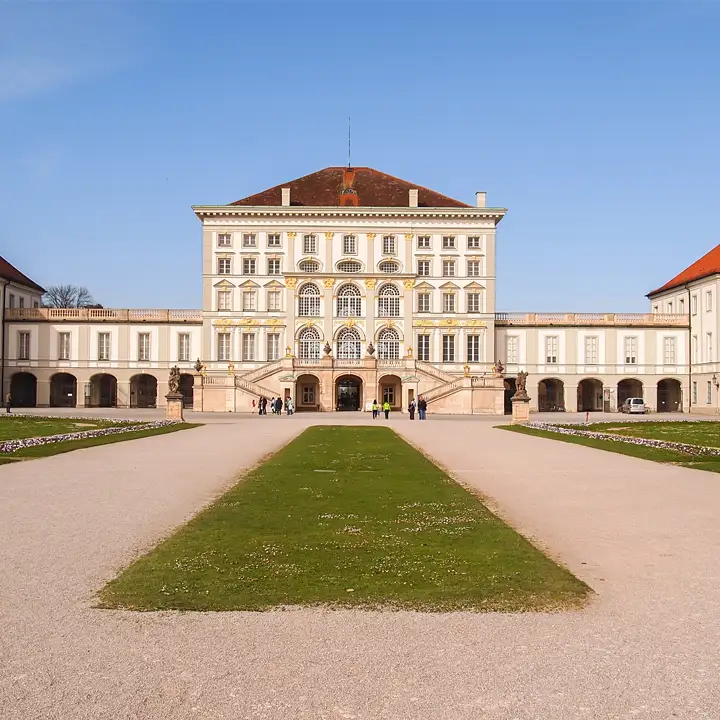
Day 9
Munich to Salzburg
Day 9
Munich to Salzburg





Morning/Mid-Day
Nymphenburg Palace
Only a short tram ride from Munich's city center, you'll find a lovely palace scenically situated amidst a large park. Created as the summer residence of the Bavarian electors, the size, and dimension of the grounds, designed by a student of the Palace of Versailles' landscape designer, is astounding. The main palace building consists of a large villa and two wings of creaking parquet floors and sumptuous period rooms. The palace managed to survive the carpet bombing of the Second World War that destroyed around 80% of the inner city.

Gallery of Beauties
Stare into the eyes of King Ludwig I's mistresses.
Show More

Nymphenburg Garden
Escape to the favorite natural retreat of locals.
Show More

Marstallmuseum
Stare up close at the splendid and ostentatious carriages built for Bavaria's rulers.
Show More

Botanical Garden
Visit M unich's large Botanical Gardens just north of the Nymphenburg Palace.
Show More

Gallery of Beauties
Stare into the eyes of King Ludwig I's mistresses.
Show More

Nymphenburg Garden
Escape to the favorite natural retreat of locals.
Show More

Marstallmuseum
Stare up close at the splendid and ostentatious carriages built for Bavaria's rulers.
Show More

Botanical Garden
Visit M unich's large Botanical Gardens just north of the Nymphenburg Palace.
Show More
prev
next

Day 9
Munich to Salzburg


Gallery of Beauties
 Highlight of Nymphenburg Palace
Highlight of Nymphenburg PalaceStare into the eyes of King Ludwig I's mistresses.
One of the high points of the magnificent palace is the Schönheitengalerie, or the Gallery of Beauties, featuring 38 portraits of attractive females admired by King Ludwig I, including some of his mistresses, many with fascinating stories of their own related via the audio guide. Be sure to check out the story of Ludwig's longstanding infamous mistress, the Irish dancer Lola Montez, over whom Ludwig lost his crown.

Nymphenburg Garden
 Highlight of Nymphenburg Palace
Highlight of Nymphenburg PalaceEscape to the favorite natural retreat of locals.
The sprawling park behind Nymphenburg Palace is a favorite spot with Munich residents and visitors alike. It started out as an Italian garden and was later redesigned in the French style, but in the 19th century most of the park was transformed into the more natural English style. It is embellished with a number of water features, including a large lake, a cascade and a 1.5 mile-long canal - a great venue for ice skating and ice curling when it freezes over in winter.

Marstallmuseum
 Highlight of Nymphenburg Palace
Highlight of Nymphenburg PalaceStare up close at the splendid and ostentatious carriages built for Bavaria's rulers.
Also housed in the main building is the Marstallmuseum, displaying royal coaches and riding gear dripping with gild and golden ornamentation, including King Ludwig II's outrageously fairy tale–like rococo sleigh, ingeniously fitted with oil lamps for his impromptu nocturnal outings. Upstairs is the world's largest collection of porcelain made by the famous Nymphenburger Manufaktur. Also known as the Sammlung Bäuml, it presents the entire product palette from the company's founding in 1747 until 1930.

Botanical Garden
 Highlight of Nymphenburg Palace
Highlight of Nymphenburg PalaceVisit M unich's large Botanical Gardens just north of the Nymphenburg Palace.
There are over 52 acres in the gardens, included greenhouses, a lake, a fountain, and houses dedicated to Africa and Madagascar, Mexico, palms and cactuses, and other themes.

Gallery of Beauties
 Highlight of Nymphenburg Palace
Highlight of Nymphenburg PalaceStare into the eyes of King Ludwig I's mistresses.
One of the high points of the magnificent palace is the Schönheitengalerie, or the Gallery of Beauties, featuring 38 portraits of attractive females admired by King Ludwig I, including some of his mistresses, many with fascinating stories of their own related via the audio guide. Be sure to check out the story of Ludwig's longstanding infamous mistress, the Irish dancer Lola Montez, over whom Ludwig lost his crown.

Nymphenburg Garden
 Highlight of Nymphenburg Palace
Highlight of Nymphenburg PalaceEscape to the favorite natural retreat of locals.
The sprawling park behind Nymphenburg Palace is a favorite spot with Munich residents and visitors alike. It started out as an Italian garden and was later redesigned in the French style, but in the 19th century most of the park was transformed into the more natural English style. It is embellished with a number of water features, including a large lake, a cascade and a 1.5 mile-long canal - a great venue for ice skating and ice curling when it freezes over in winter.

Marstallmuseum
 Highlight of Nymphenburg Palace
Highlight of Nymphenburg PalaceStare up close at the splendid and ostentatious carriages built for Bavaria's rulers.
Also housed in the main building is the Marstallmuseum, displaying royal coaches and riding gear dripping with gild and golden ornamentation, including King Ludwig II's outrageously fairy tale–like rococo sleigh, ingeniously fitted with oil lamps for his impromptu nocturnal outings. Upstairs is the world's largest collection of porcelain made by the famous Nymphenburger Manufaktur. Also known as the Sammlung Bäuml, it presents the entire product palette from the company's founding in 1747 until 1930.

Botanical Garden
 Highlight of Nymphenburg Palace
Highlight of Nymphenburg PalaceVisit M unich's large Botanical Gardens just north of the Nymphenburg Palace.
There are over 52 acres in the gardens, included greenhouses, a lake, a fountain, and houses dedicated to Africa and Madagascar, Mexico, palms and cactuses, and other themes.
prev
next

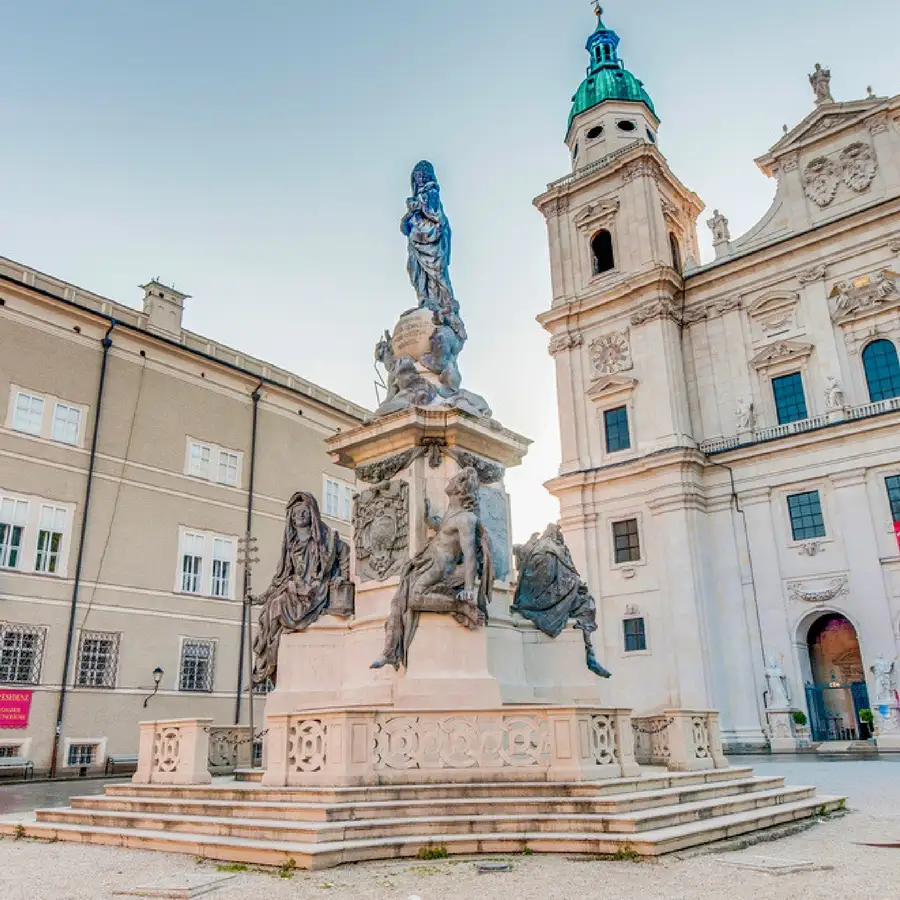
Day 10
Salzburg
Day 10
Salzburg




9:00 AM - 11:30 AM
Guided Walking Tour of Salzburg
Salzburg is simply overwhelming in all the best ways. It is alive with fascinating history, grandiose and sublime architecture fills every street and square, culture and music permeate the atmosphere, and it is surrounded by breath-taking natural scenery. This guided tour with a local will provide the context needed to bring all of this beauty into perspective, and to connect the physical city to its history, culture, and environment.

Mozartplatz
One of several grand squares in the center of Altstadt in Salzburg.
Show More

Salzburg Cathedral
Visit Salzburg's largest and most impressive church.
Show More

Mozartplatz
One of several grand squares in the center of Altstadt in Salzburg.
Show More

Salzburg Cathedral
Visit Salzburg's largest and most impressive church.
Show More

Mozartplatz
One of several grand squares in the center of Altstadt in Salzburg.
Show More

Salzburg Cathedral
Visit Salzburg's largest and most impressive church.
Show More
prev
next

Day 10
Salzburg

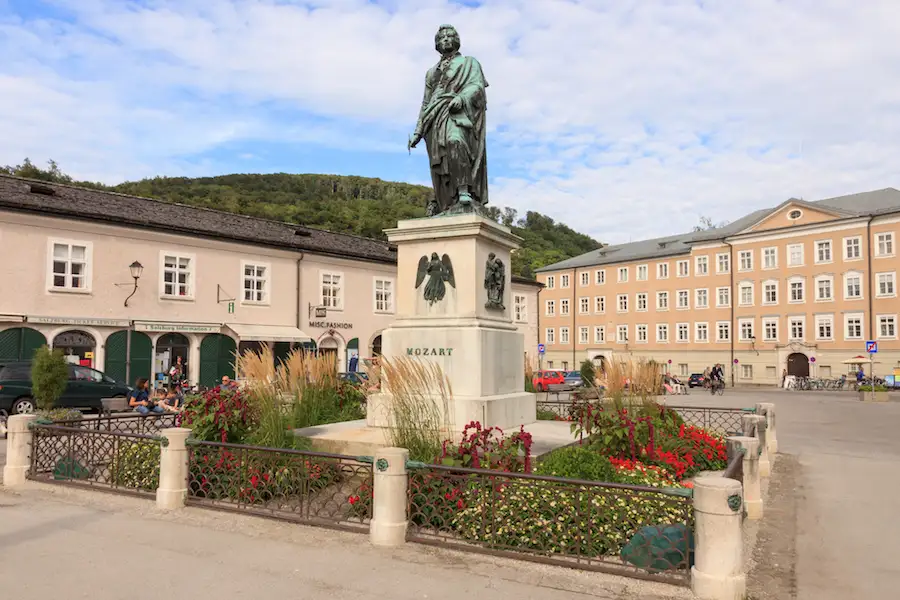
Mozartplatz
 Highlight of Guided Walking Tour of Salzburg
Highlight of Guided Walking Tour of SalzburgOne of several grand squares in the center of Altstadt in Salzburg.
One of several grand squares in the center of Altstadt in Salzburg. In the Mozartplatz you can find a statue of the famous composer.

Salzburg Cathedral
 Highlight of Guided Walking Tour of Salzburg
Highlight of Guided Walking Tour of SalzburgVisit Salzburg's largest and most impressive church.
The current cathedral was built between 1614-1628 and is a masterpiece of baroque architecture. The cathedral was largely destroyed by an Allied bomb in WWII but was restored by 1959. One of the most significant treasures in the cathedral is the Baptismal Font, which was cast in 1321 and rests on copper lions dating back to the 1100s.

Mozartplatz
 Highlight of Guided Walking Tour of Salzburg
Highlight of Guided Walking Tour of SalzburgOne of several grand squares in the center of Altstadt in Salzburg.
One of several grand squares in the center of Altstadt in Salzburg. In the Mozartplatz you can find a statue of the famous composer.

Salzburg Cathedral
 Highlight of Guided Walking Tour of Salzburg
Highlight of Guided Walking Tour of SalzburgVisit Salzburg's largest and most impressive church.
The current cathedral was built between 1614-1628 and is a masterpiece of baroque architecture. The cathedral was largely destroyed by an Allied bomb in WWII but was restored by 1959. One of the most significant treasures in the cathedral is the Baptismal Font, which was cast in 1321 and rests on copper lions dating back to the 1100s.

Mozartplatz
 Highlight of Guided Walking Tour of Salzburg
Highlight of Guided Walking Tour of SalzburgOne of several grand squares in the center of Altstadt in Salzburg.
One of several grand squares in the center of Altstadt in Salzburg. In the Mozartplatz you can find a statue of the famous composer.

Salzburg Cathedral
 Highlight of Guided Walking Tour of Salzburg
Highlight of Guided Walking Tour of SalzburgVisit Salzburg's largest and most impressive church.
The current cathedral was built between 1614-1628 and is a masterpiece of baroque architecture. The cathedral was largely destroyed by an Allied bomb in WWII but was restored by 1959. One of the most significant treasures in the cathedral is the Baptismal Font, which was cast in 1321 and rests on copper lions dating back to the 1100s.
prev
next


Day 11
Salzburg
Day 11
Salzburg



Morning/Mid-Day
Hellbrunn Palace
Built as a summer palace by Salzburg's Prince-Bishop, the Hellbrunn Palace is a picturesque palace surrounded by even more beautiful gardens. The early baroque palace was built exclusively for the purpose of entertainment, as the Prince-Bishop would actually return to Salzburg in the evening. It can be toured with an audio guide and includes several beautiful frescoed ceilings. There is a great deal to discover in the gardens - hidden grottos, clever statues, reflecting pools, as well as flora and fauna. And the trick fountains are a must for every visit. Both the transportation (bus #25) and the entry are covered by the Salzburg Card.

Trick Water Fountains
Get a little wet in this delightful garden of tricks.
Show More

Trick Water Fountains
Get a little wet in this delightful garden of tricks.
Show More

Trick Water Fountains
Get a little wet in this delightful garden of tricks.
Show More

Trick Water Fountains
Get a little wet in this delightful garden of tricks.
Show More

Trick Water Fountains
Get a little wet in this delightful garden of tricks.
Show More
prev
next

Day 11
Salzburg


Trick Water Fountains
 Highlight of Hellbrunn Palace
Highlight of Hellbrunn PalaceGet a little wet in this delightful garden of tricks.
The famous "Wasserspiele" are trick water fountains that never fail to delight, astonish, and befuddle. The fountains were actually built with the express purpose of playing practical jokes on guests, and they continue to provide plenty of amusement today.

Trick Water Fountains
 Highlight of Hellbrunn Palace
Highlight of Hellbrunn PalaceGet a little wet in this delightful garden of tricks.
The famous "Wasserspiele" are trick water fountains that never fail to delight, astonish, and befuddle. The fountains were actually built with the express purpose of playing practical jokes on guests, and they continue to provide plenty of amusement today.

Trick Water Fountains
 Highlight of Hellbrunn Palace
Highlight of Hellbrunn PalaceGet a little wet in this delightful garden of tricks.
The famous "Wasserspiele" are trick water fountains that never fail to delight, astonish, and befuddle. The fountains were actually built with the express purpose of playing practical jokes on guests, and they continue to provide plenty of amusement today.

Trick Water Fountains
 Highlight of Hellbrunn Palace
Highlight of Hellbrunn PalaceGet a little wet in this delightful garden of tricks.
The famous "Wasserspiele" are trick water fountains that never fail to delight, astonish, and befuddle. The fountains were actually built with the express purpose of playing practical jokes on guests, and they continue to provide plenty of amusement today.

Trick Water Fountains
 Highlight of Hellbrunn Palace
Highlight of Hellbrunn PalaceGet a little wet in this delightful garden of tricks.
The famous "Wasserspiele" are trick water fountains that never fail to delight, astonish, and befuddle. The fountains were actually built with the express purpose of playing practical jokes on guests, and they continue to provide plenty of amusement today.
prev
next

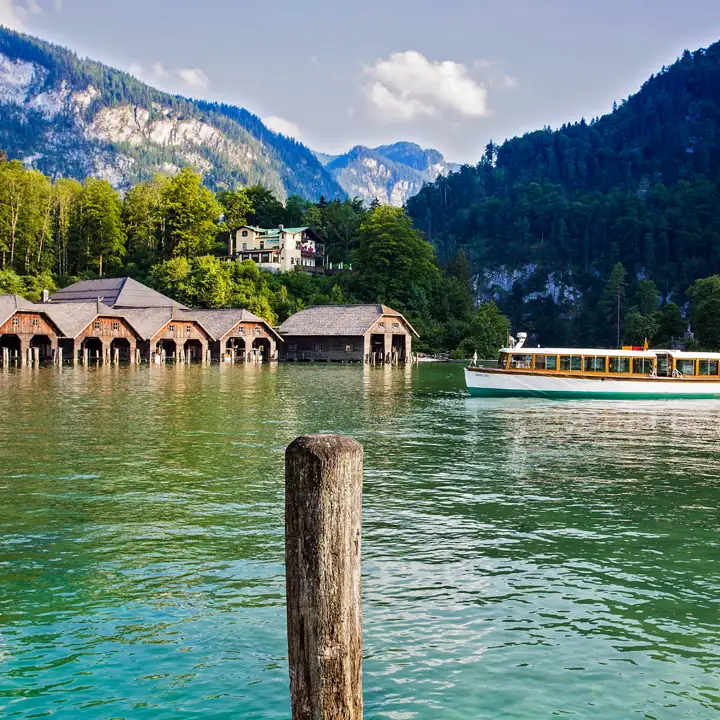
Day 12
Salzburg
Day 12
Salzburg


Early Morning to Mid-Day
Königssee Lake
The breathtakingly beautiful Königssee (King's Lake) is the deepest lake in the Alps and is surrounded by steep mountains. Taking a cruise on the lake is an unforgettable experience. The boat will take you to the red-onion domed Kloster St. Bartolomä, where you then take a relaxing and enchanting walk along the forested lakeshore. For serious hikers, you can also continue on the boat to the far end of the lake, and then take a hike to a dramatic waterfall.

Obersee
Take a short hike to this stunning lake nestled within the mountains.
Show More

St Bartholomew's Church
Hop off the boat for a pleasant and easy walk along the lake shore near this onion-domed church.
Show More

Königssee Cruise
Relax on an unforgettable cruise across the lake, hopping on an off when you please.
Show More

Malerwinkl
Venture a little further to find a perfect view of the lake.
Show More

Jennerbahn Cable Car
Take an exhilarating ride into the Alpine peaks above the lake.
Show More

Obersee
Take a short hike to this stunning lake nestled within the mountains.
Show More

St Bartholomew's Church
Hop off the boat for a pleasant and easy walk along the lake shore near this onion-domed church.
Show More

Königssee Cruise
Relax on an unforgettable cruise across the lake, hopping on an off when you please.
Show More

Malerwinkl
Venture a little further to find a perfect view of the lake.
Show More

Jennerbahn Cable Car
Take an exhilarating ride into the Alpine peaks above the lake.
Show More

Obersee
Take a short hike to this stunning lake nestled within the mountains.
Show More
prev
next

Day 12
Salzburg

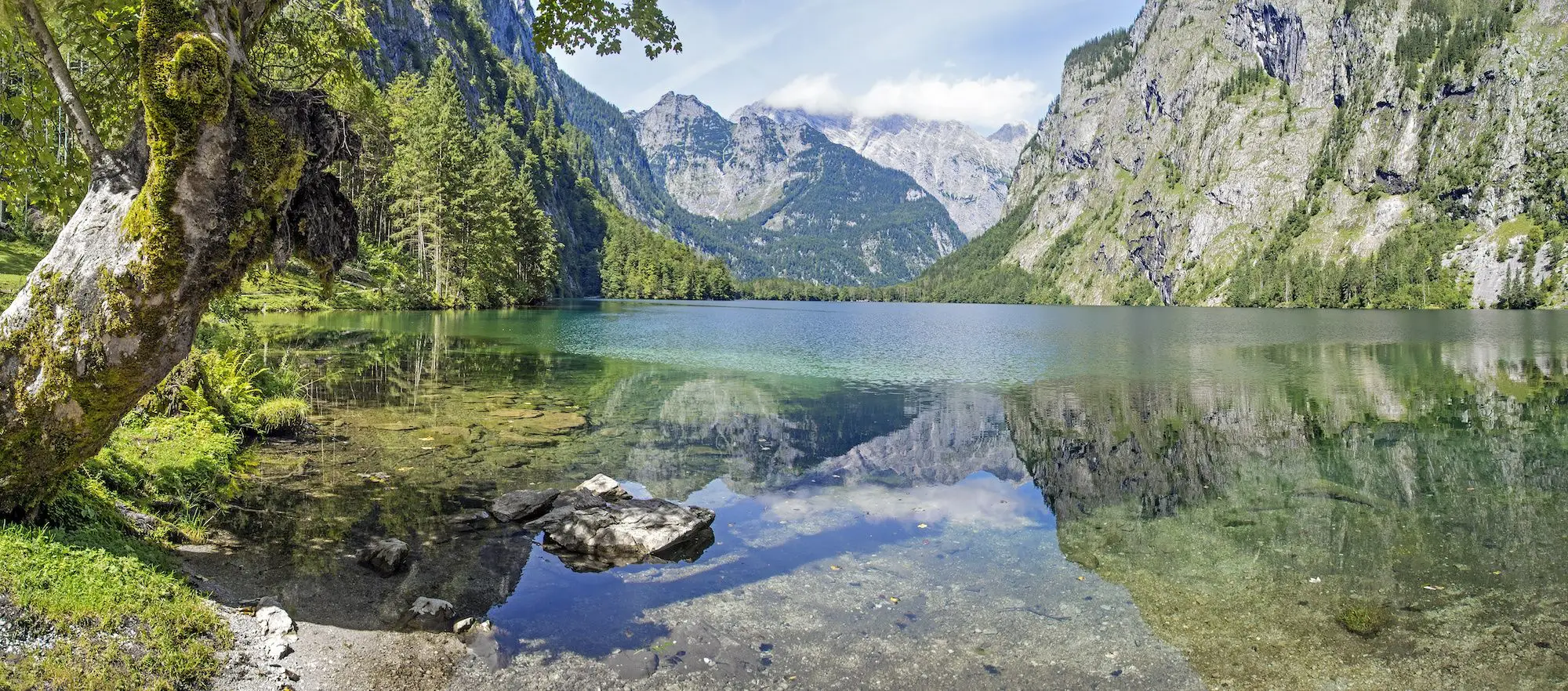
Obersee
 Highlight of Königssee Lake
Highlight of Königssee LakeTake a short hike to this stunning lake nestled within the mountains.
You can take a quick jaunt to the Obersee, or better yet, you can take a 5 miles hike to a waterfall above the lake. The trail is well-maintained and well-traveled, although rocky and steep at times. The hike begins with a fairly flat and easy walk from the boat docks to the Obersee lake. You will then follow a trail along the right shore of the lake. The trail becomes rocky and steep, and you must ascend about 250 feet. At the high points of the trail, you will have a beautiful view of the lake below and surrounding mountains. You will then descend and reach the far end of the lake, where you will enjoy another beautiful view. You will then continue hiking towards the end of the valley, climbing another approximately 350 feet to reach the end of the valley, where you will see the waterfalls. Keep in mind that at the end of summer or in fall the waterfall may not be very impressive.

St Bartholomew's Church
 Highlight of Königssee Lake
Highlight of Königssee LakeHop off the boat for a pleasant and easy walk along the lake shore near this onion-domed church.
To take this easy, flat, but very beautiful hike, from the boat docks, follow the orange signs for the "St. Bartholomä-Rundweg". You will make a circle on a well-maintained trail, first walking along the lakeshore for about half a mile, and then turn left into the forest. Continue following the signs for the Rundweg, taking another left after about 350 yards, and returning to the docks in a little less than half a mile.
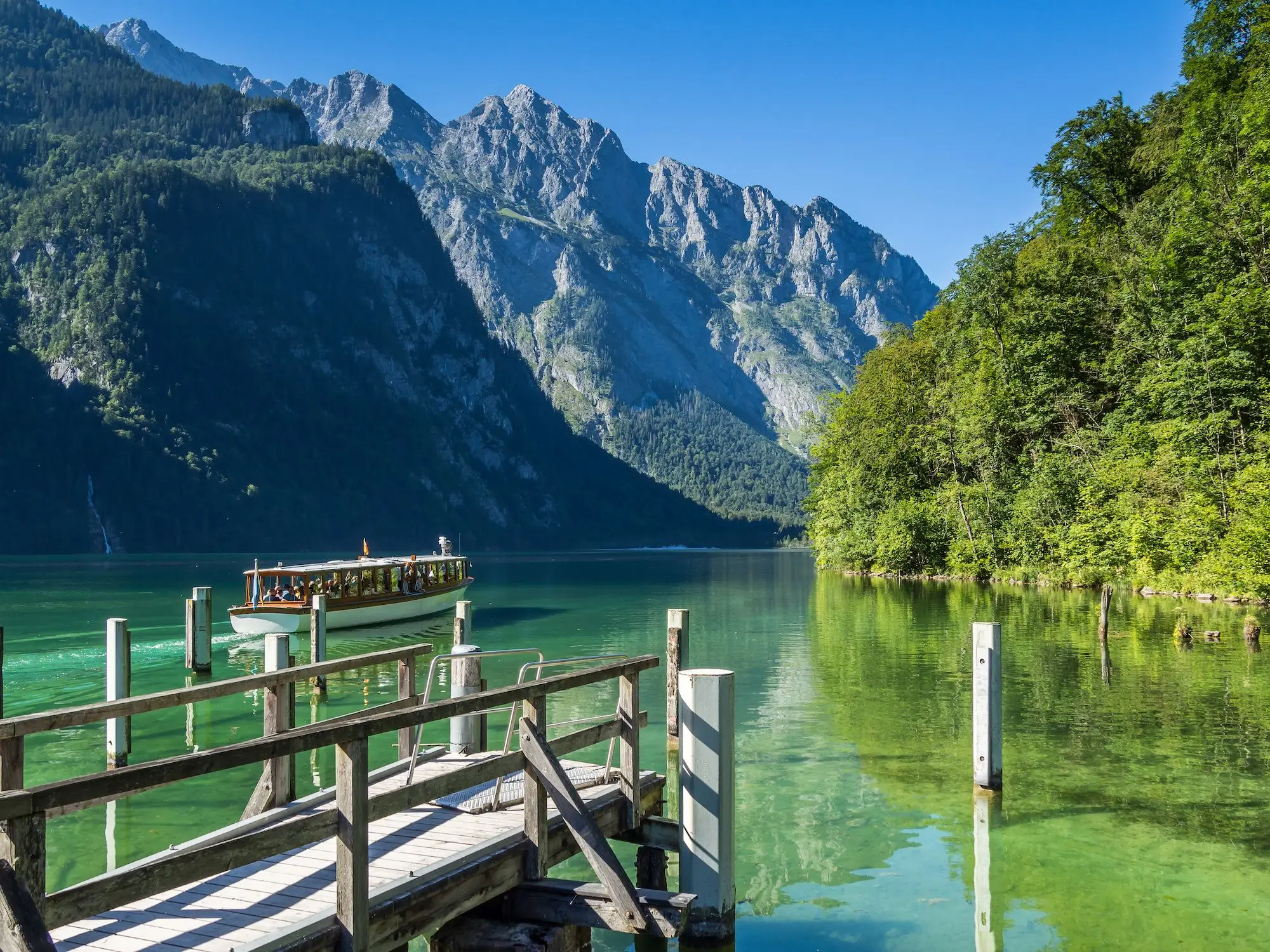
Königssee Cruise
 Highlight of Königssee Lake
Highlight of Königssee LakeRelax on an unforgettable cruise across the lake, hopping on an off when you please.
The cruises are made all the more enjoyable as the electric boats are almost completely quiet. Nothing will distract you for the atmosphere and scenery. Cruises occur all year long unless the lake is iced over. Tickets are sold directly at the docks, although getting there early is highly recommended to avoid long lines.
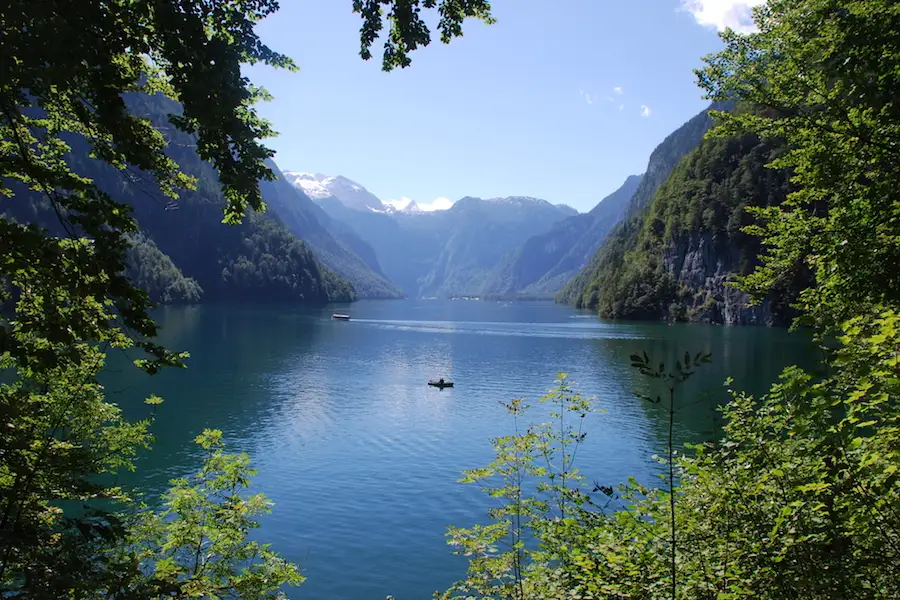
Malerwinkl
 Highlight of Königssee Lake
Highlight of Königssee LakeVenture a little further to find a perfect view of the lake.
The Malerwinkl (i.e. the Painters Angle) is less than a mile walk from the boat docks and offers a picture-frame view of the lake. You can walk down to the water and soak your feet. After enjoying the view, you can head back, or take a strenuous, approximately hour-long hike to the Jennerbahn cable car station. Just follow the signs for the Malerwinkl-Rundweg and the Jennerbahn-Talstation. This is a trail for experienced hikers with proper footwear, which includes a climb of about 400 feet.

Jennerbahn Cable Car
 Highlight of Königssee Lake
Highlight of Königssee LakeTake an exhilarating ride into the Alpine peaks above the lake.
You will enjoy amazing views of the lake and the surrounding Bavarian Alps. If you are up for it, you can even hike in the mountains as well, or ski in the winter. You can board the Jennerbahn cable car near the same parking area and bus stop which services the lake. It costs approx. 27.50 EUR for an adult roundtrip ticket to the top. You can save money by hiking back down, but this is only recommended for experienced hikers with good footwear.

Obersee
 Highlight of Königssee Lake
Highlight of Königssee LakeTake a short hike to this stunning lake nestled within the mountains.
You can take a quick jaunt to the Obersee, or better yet, you can take a 5 miles hike to a waterfall above the lake. The trail is well-maintained and well-traveled, although rocky and steep at times. The hike begins with a fairly flat and easy walk from the boat docks to the Obersee lake. You will then follow a trail along the right shore of the lake. The trail becomes rocky and steep, and you must ascend about 250 feet. At the high points of the trail, you will have a beautiful view of the lake below and surrounding mountains. You will then descend and reach the far end of the lake, where you will enjoy another beautiful view. You will then continue hiking towards the end of the valley, climbing another approximately 350 feet to reach the end of the valley, where you will see the waterfalls. Keep in mind that at the end of summer or in fall the waterfall may not be very impressive.

St Bartholomew's Church
 Highlight of Königssee Lake
Highlight of Königssee LakeHop off the boat for a pleasant and easy walk along the lake shore near this onion-domed church.
To take this easy, flat, but very beautiful hike, from the boat docks, follow the orange signs for the "St. Bartholomä-Rundweg". You will make a circle on a well-maintained trail, first walking along the lakeshore for about half a mile, and then turn left into the forest. Continue following the signs for the Rundweg, taking another left after about 350 yards, and returning to the docks in a little less than half a mile.

Königssee Cruise
 Highlight of Königssee Lake
Highlight of Königssee LakeRelax on an unforgettable cruise across the lake, hopping on an off when you please.
The cruises are made all the more enjoyable as the electric boats are almost completely quiet. Nothing will distract you for the atmosphere and scenery. Cruises occur all year long unless the lake is iced over. Tickets are sold directly at the docks, although getting there early is highly recommended to avoid long lines.

Malerwinkl
 Highlight of Königssee Lake
Highlight of Königssee LakeVenture a little further to find a perfect view of the lake.
The Malerwinkl (i.e. the Painters Angle) is less than a mile walk from the boat docks and offers a picture-frame view of the lake. You can walk down to the water and soak your feet. After enjoying the view, you can head back, or take a strenuous, approximately hour-long hike to the Jennerbahn cable car station. Just follow the signs for the Malerwinkl-Rundweg and the Jennerbahn-Talstation. This is a trail for experienced hikers with proper footwear, which includes a climb of about 400 feet.

Jennerbahn Cable Car
 Highlight of Königssee Lake
Highlight of Königssee LakeTake an exhilarating ride into the Alpine peaks above the lake.
You will enjoy amazing views of the lake and the surrounding Bavarian Alps. If you are up for it, you can even hike in the mountains as well, or ski in the winter. You can board the Jennerbahn cable car near the same parking area and bus stop which services the lake. It costs approx. 27.50 EUR for an adult roundtrip ticket to the top. You can save money by hiking back down, but this is only recommended for experienced hikers with good footwear.

Obersee
 Highlight of Königssee Lake
Highlight of Königssee LakeTake a short hike to this stunning lake nestled within the mountains.
You can take a quick jaunt to the Obersee, or better yet, you can take a 5 miles hike to a waterfall above the lake. The trail is well-maintained and well-traveled, although rocky and steep at times. The hike begins with a fairly flat and easy walk from the boat docks to the Obersee lake. You will then follow a trail along the right shore of the lake. The trail becomes rocky and steep, and you must ascend about 250 feet. At the high points of the trail, you will have a beautiful view of the lake below and surrounding mountains. You will then descend and reach the far end of the lake, where you will enjoy another beautiful view. You will then continue hiking towards the end of the valley, climbing another approximately 350 feet to reach the end of the valley, where you will see the waterfalls. Keep in mind that at the end of summer or in fall the waterfall may not be very impressive.
prev
next

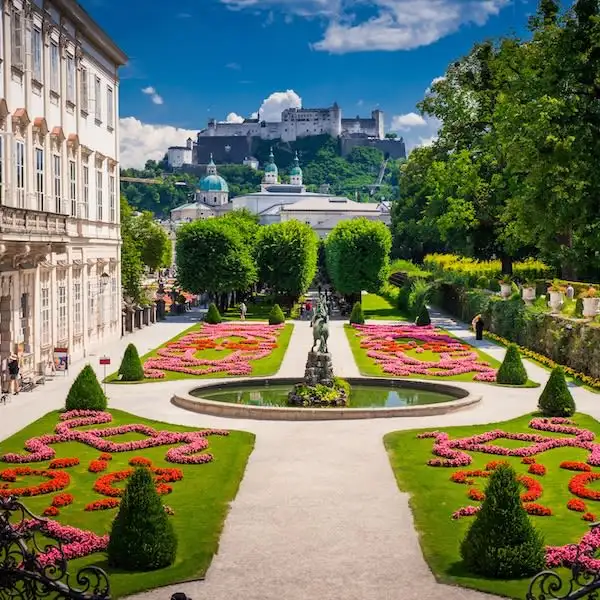
Day 13
Salzburg to Vienna
Day 13
Salzburg to Vienna





Morning
Neustadt
On the right bank of Salzach river lies the Neustadt (New Town). Although it may be just a bit newer than the Altstadt, it still boasts hundreds of years of history in it's winding and narrow Medieval lanes. The Mirabell Palace, a Baroque masterpiece built in 1606 by the Prince-Archbishop of Salzburg for his concubine, is the most famous site in the Neustadt. As impressive as the palace and its interior are, the elaborate gardens surrounding the palace are more famous than the palace itself.

Linzer Gasse
Hang out with locals on this street lined by shopping and restaurants.
Show More

St. Sebastian's cemetery
Wander off of the beaten path to find one of Salzburg's hidden treasures, St. Sebastian's cemetery.
Show More

Mirabell Palace Gardens
Stroll this tranquil garden amidst the city hubbub and sing "Do-Re-Me" .
Show More

Linzer Gasse
Hang out with locals on this street lined by shopping and restaurants.
Show More

St. Sebastian's cemetery
Wander off of the beaten path to find one of Salzburg's hidden treasures, St. Sebastian's cemetery.
Show More

Mirabell Palace Gardens
Stroll this tranquil garden amidst the city hubbub and sing "Do-Re-Me" .
Show More

Linzer Gasse
Hang out with locals on this street lined by shopping and restaurants.
Show More
prev
next

Day 13
Salzburg to Vienna


Linzer Gasse
 Highlight of Neustadt
Highlight of NeustadtHang out with locals on this street lined by shopping and restaurants.
The Linzer Gasse and the streets surrounding it, with their historic storefronts and a multitude of restaurants and old guesthouses, give the Altstadt a run for its money in terms of liveliness and charm. One of the best views in Salzburg is hidden near the Linzer Gasse. Just look for the gateway passage, which is located on the right side of the Linzer Gasse if you are coming from the river and head up the mountain side.

St. Sebastian's cemetery
 Highlight of Neustadt
Highlight of NeustadtWander off of the beaten path to find one of Salzburg's hidden treasures, St. Sebastian's cemetery.
The peaceful cemetery is the resting place of many prominent Salzburgers, including Mozart's wife and father. The cemetery is lined by a cloister passageway, and in the center of the cemetery lies the magnificent mausoleum of the Prince Archbishop Wolf Dietrich. To find the cemetery just walk towards the church tower on the Linzer Gasse. The cemetery is located behind the church. There is usually an entrance open to the right of the church, but if that is closed, go the sidestreet to the left of the church (where you see the archway). You will find another entrance on the right side of the courtyard.
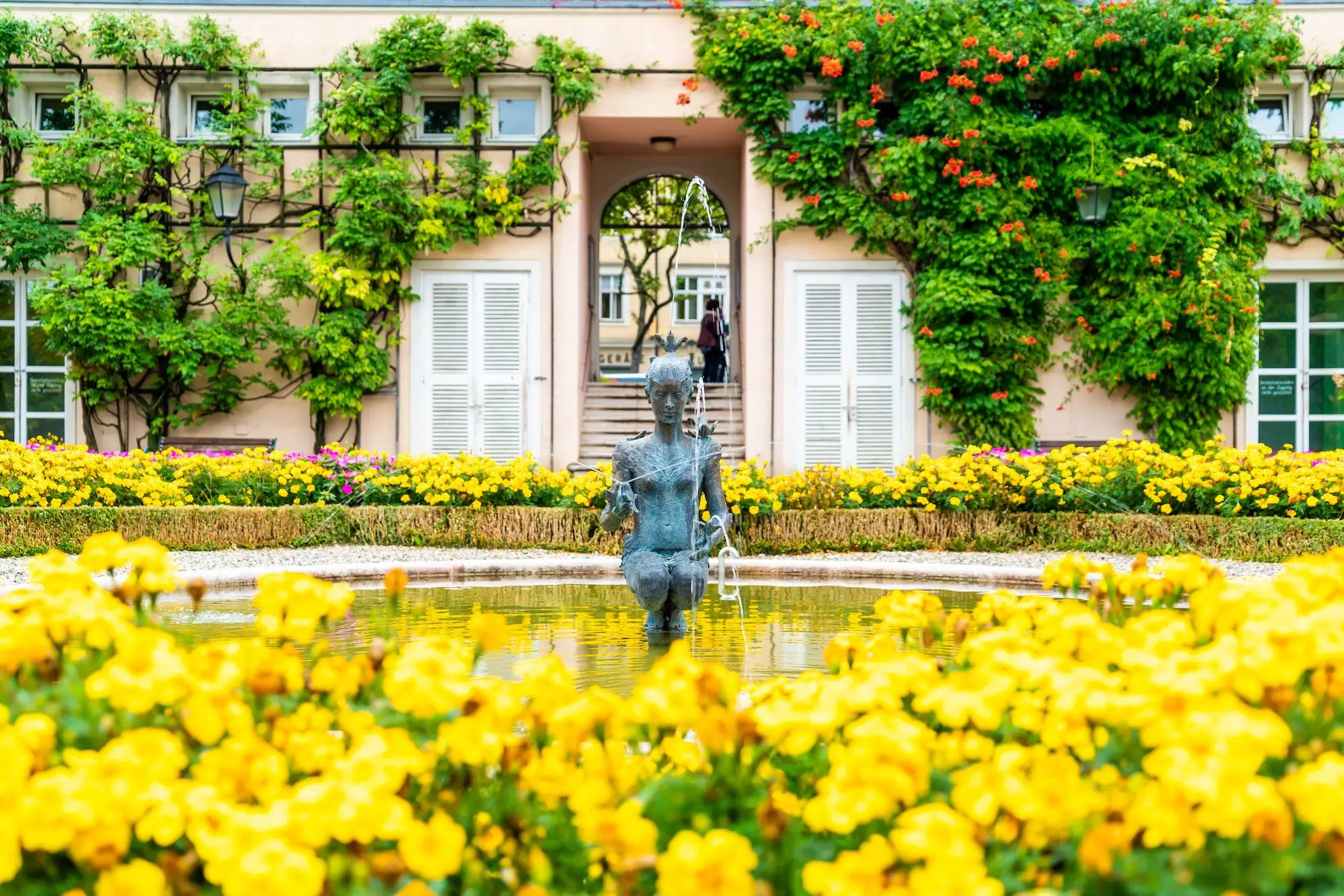
Mirabell Palace Gardens
 Highlight of Neustadt
Highlight of NeustadtStroll this tranquil garden amidst the city hubbub and sing "Do-Re-Me" .
Within the gardens, you will discover not only greenery and flowers but also statues of a pegasus, unicorns, lions and other exotic animals, as well as a gnome garden, grand staircases, fountains, and other picturesque spots. Sound of Music fans will recognize it, as this is where several parts of the "Do-Re-Me" song were filmed. Maria and the children march around the pegasus statue and fountain, race through the lattice garden tunnels, pose at the garden gates, and pet the gnomes on the head. Not much of the palace interior is open to visitors, however, the best part of the palace, a marble staircase lined by Raphael Donner statues, is open to those who know how to find it. The corridor to the staircase can be found in the passage that connects the palace courtyard to the gardens and the Pegasus fountain. If you are coming from the courtyard, the door to the corridor is on your right. You will find the staircase within a few steps.

Linzer Gasse
 Highlight of Neustadt
Highlight of NeustadtHang out with locals on this street lined by shopping and restaurants.
The Linzer Gasse and the streets surrounding it, with their historic storefronts and a multitude of restaurants and old guesthouses, give the Altstadt a run for its money in terms of liveliness and charm. One of the best views in Salzburg is hidden near the Linzer Gasse. Just look for the gateway passage, which is located on the right side of the Linzer Gasse if you are coming from the river and head up the mountain side.

St. Sebastian's cemetery
 Highlight of Neustadt
Highlight of NeustadtWander off of the beaten path to find one of Salzburg's hidden treasures, St. Sebastian's cemetery.
The peaceful cemetery is the resting place of many prominent Salzburgers, including Mozart's wife and father. The cemetery is lined by a cloister passageway, and in the center of the cemetery lies the magnificent mausoleum of the Prince Archbishop Wolf Dietrich. To find the cemetery just walk towards the church tower on the Linzer Gasse. The cemetery is located behind the church. There is usually an entrance open to the right of the church, but if that is closed, go the sidestreet to the left of the church (where you see the archway). You will find another entrance on the right side of the courtyard.

Mirabell Palace Gardens
 Highlight of Neustadt
Highlight of NeustadtStroll this tranquil garden amidst the city hubbub and sing "Do-Re-Me" .
Within the gardens, you will discover not only greenery and flowers but also statues of a pegasus, unicorns, lions and other exotic animals, as well as a gnome garden, grand staircases, fountains, and other picturesque spots. Sound of Music fans will recognize it, as this is where several parts of the "Do-Re-Me" song were filmed. Maria and the children march around the pegasus statue and fountain, race through the lattice garden tunnels, pose at the garden gates, and pet the gnomes on the head. Not much of the palace interior is open to visitors, however, the best part of the palace, a marble staircase lined by Raphael Donner statues, is open to those who know how to find it. The corridor to the staircase can be found in the passage that connects the palace courtyard to the gardens and the Pegasus fountain. If you are coming from the courtyard, the door to the corridor is on your right. You will find the staircase within a few steps.

Linzer Gasse
 Highlight of Neustadt
Highlight of NeustadtHang out with locals on this street lined by shopping and restaurants.
The Linzer Gasse and the streets surrounding it, with their historic storefronts and a multitude of restaurants and old guesthouses, give the Altstadt a run for its money in terms of liveliness and charm. One of the best views in Salzburg is hidden near the Linzer Gasse. Just look for the gateway passage, which is located on the right side of the Linzer Gasse if you are coming from the river and head up the mountain side.
prev
next


Day 14
Vienna
Day 14
Vienna



9:00 AM - 11:30 AM
Guided Walk of the Inner City
This tour takes you back in history to explore the Vienna that stood within the old city walls. You will learn about the humble beginnings of Vienna before it became the capital of a great empire and one of the most important cities in Europe. You will discover how Vienna's early inhabitants lived and how they left their mark on the city and its beautiful Medieval, Renaissance, and Baroque architecture.

Day 14
Vienna


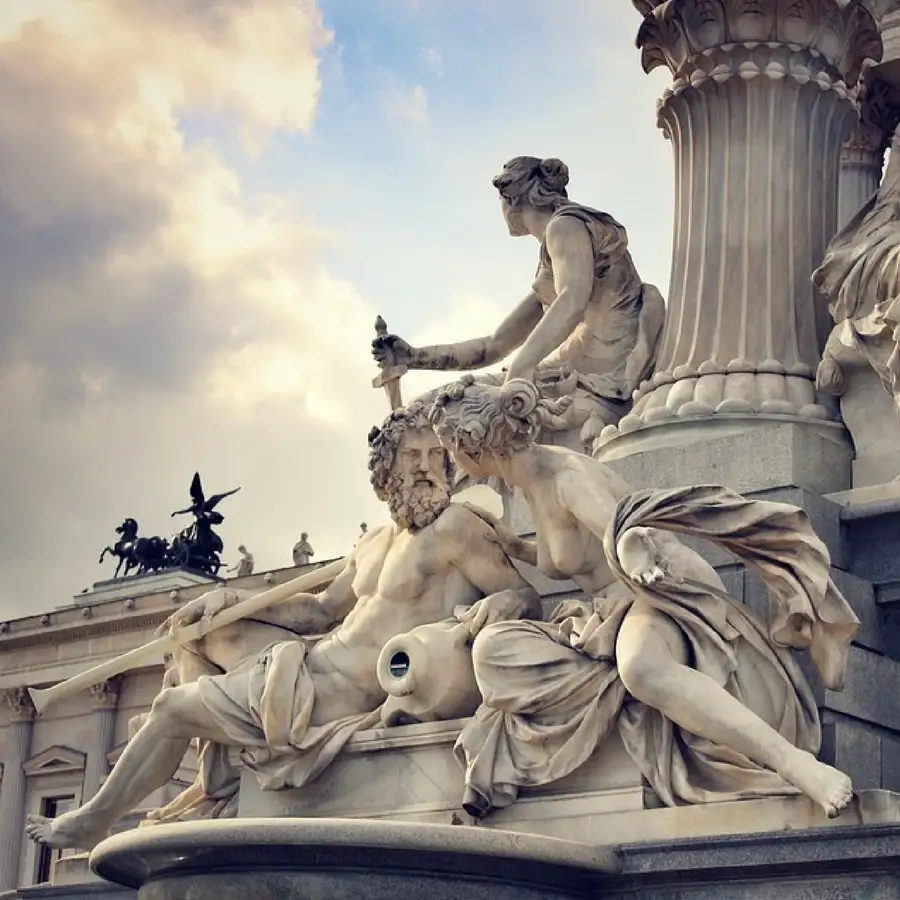
Day 15
Vienna
Day 15
Vienna



Morning to Afternoon
Schönbrunn Palace
The magnificent Baroque palace of Schönbrunn is most famously associated with Empress Maria Theresa, who lived here surrounded by 16 little archdukes and duchesses who also happened to be her children. On your tour of the palace, you will see how Maria Theresa and other past imperial residents lived. No visit is complete without a stroll in the vast gardens surrounding the palace.

Schönbrunn Zoo
Join local families enjoying one of Europe's best zoos.
Show More

Schönbrunn Gardens
Get lost in the huge imperial gardens.
Show More

Schönbrunn Zoo
Join local families enjoying one of Europe's best zoos.
Show More

Schönbrunn Gardens
Get lost in the huge imperial gardens.
Show More

Schönbrunn Zoo
Join local families enjoying one of Europe's best zoos.
Show More

Schönbrunn Gardens
Get lost in the huge imperial gardens.
Show More
prev
next

Day 15
Vienna


Schönbrunn Zoo
 Highlight of Schönbrunn Palace
Highlight of Schönbrunn PalaceJoin local families enjoying one of Europe's best zoos.
With an entrance directly connected to the Schönbrunn palace gardens, visiting the zoo can be a great addition to any trip to the palace. Founded as an imperial menagerie in 1752, it is the oldest continually operated zoo in the world, and today is home to many rare species such as giant pandas.
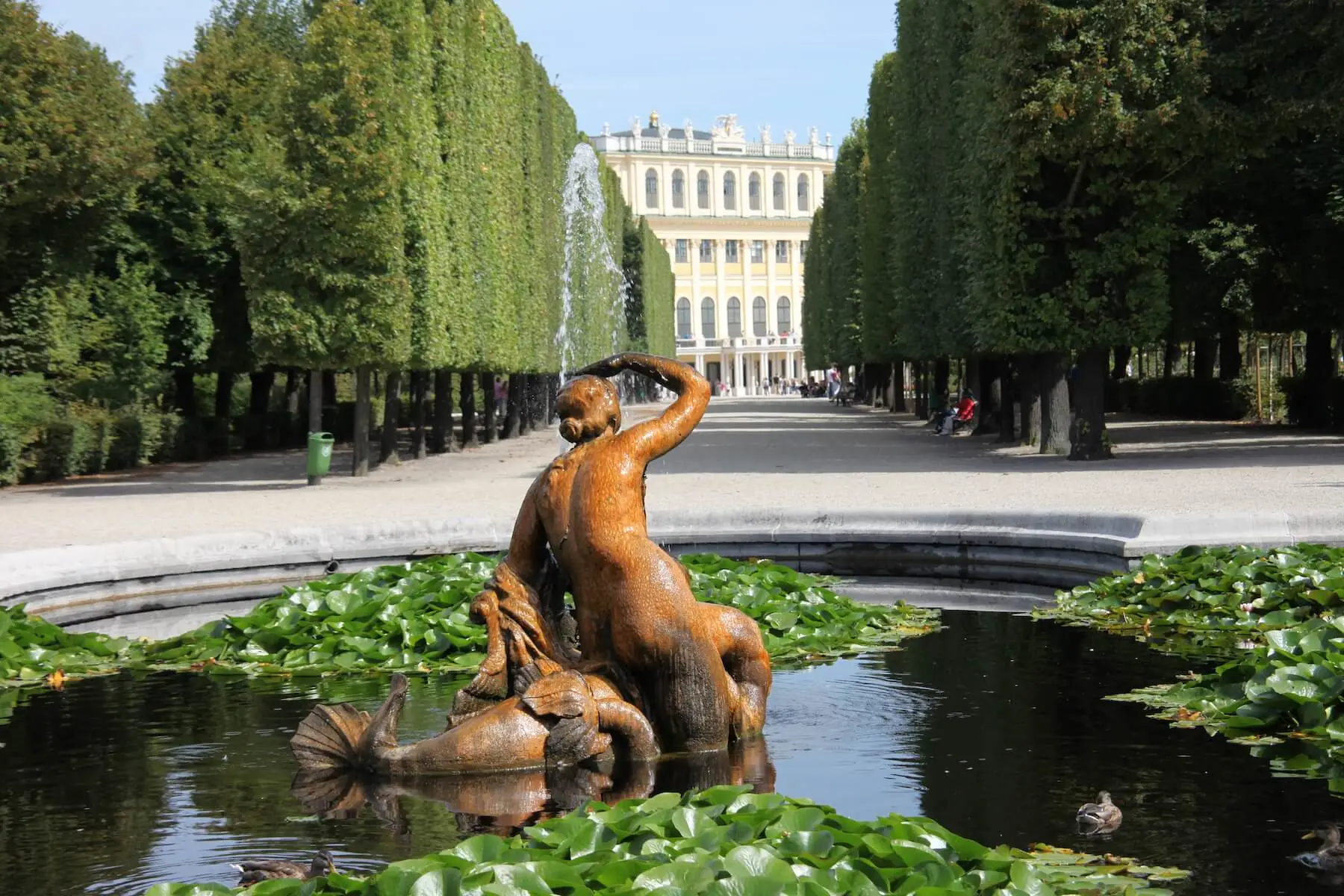
Schönbrunn Gardens
 Highlight of Schönbrunn Palace
Highlight of Schönbrunn PalaceGet lost in the huge imperial gardens.
The beautiful park is a mix of formal gardens and woodlands, and is dotted with enchanting statues & fountains, including a massive fountain of Neptune. The Gloriette pavilion sits on a rise opposite the palace and commands a wonderful view. Kids will love the labyrinth, racing to find the tower at the center of the maze.

Schönbrunn Zoo
 Highlight of Schönbrunn Palace
Highlight of Schönbrunn PalaceJoin local families enjoying one of Europe's best zoos.
With an entrance directly connected to the Schönbrunn palace gardens, visiting the zoo can be a great addition to any trip to the palace. Founded as an imperial menagerie in 1752, it is the oldest continually operated zoo in the world, and today is home to many rare species such as giant pandas.

Schönbrunn Gardens
 Highlight of Schönbrunn Palace
Highlight of Schönbrunn PalaceGet lost in the huge imperial gardens.
The beautiful park is a mix of formal gardens and woodlands, and is dotted with enchanting statues & fountains, including a massive fountain of Neptune. The Gloriette pavilion sits on a rise opposite the palace and commands a wonderful view. Kids will love the labyrinth, racing to find the tower at the center of the maze.

Schönbrunn Zoo
 Highlight of Schönbrunn Palace
Highlight of Schönbrunn PalaceJoin local families enjoying one of Europe's best zoos.
With an entrance directly connected to the Schönbrunn palace gardens, visiting the zoo can be a great addition to any trip to the palace. Founded as an imperial menagerie in 1752, it is the oldest continually operated zoo in the world, and today is home to many rare species such as giant pandas.

Schönbrunn Gardens
 Highlight of Schönbrunn Palace
Highlight of Schönbrunn PalaceGet lost in the huge imperial gardens.
The beautiful park is a mix of formal gardens and woodlands, and is dotted with enchanting statues & fountains, including a massive fountain of Neptune. The Gloriette pavilion sits on a rise opposite the palace and commands a wonderful view. Kids will love the labyrinth, racing to find the tower at the center of the maze.
prev
next


Day 16
Vienna
Day 16
Vienna



Morning/Mid-Day
Karlskirche & Belvedere Palace
Two of Vienna's greatest architectural treasures lie just beyond the Ring Street - the Belvedere Palace and the Karlskirche (St. Charles's Church). Often missed by visitors, these Baroque wonders represent Austria at the peak of its prestige and power and deserve to be on every visitor's list.

Belvedere Palace
Stroll the Belvedere's gardens, and venture inside the palace for a "Kiss".
Show More

Karlskirche
Many argue that this baroque church is as beautiful as St. Peter's - see it and decide for yourself.
Show More

Belvedere Palace
Stroll the Belvedere's gardens, and venture inside the palace for a "Kiss".
Show More

Karlskirche
Many argue that this baroque church is as beautiful as St. Peter's - see it and decide for yourself.
Show More

Belvedere Palace
Stroll the Belvedere's gardens, and venture inside the palace for a "Kiss".
Show More

Karlskirche
Many argue that this baroque church is as beautiful as St. Peter's - see it and decide for yourself.
Show More
prev
next

Day 16
Vienna


Belvedere Palace
 Highlight of Karlskirche & Belvedere Palace
Highlight of Karlskirche & Belvedere PalaceStroll the Belvedere's gardens, and venture inside the palace for a "Kiss".
Two Baraque palaces are connected by a French-style, three-level garden which features delightful fountains. Originally built as a summer residence of Prince Eugene, it now houses the Belvedere Museum where you will find Gustav Klimt's most famous work - The Kiss.

Karlskirche
 Highlight of Karlskirche & Belvedere Palace
Highlight of Karlskirche & Belvedere PalaceMany argue that this baroque church is as beautiful as St. Peter's - see it and decide for yourself.
Built between 1716-1737, Emperor Charles VI intended the church to be a thanksgiving for the end of a plague epidemic and dedicated the church to St. Charles Borromeo, who is revered for his care of plague victims. St. Charles was also his namesake, meaning that the church's name evokes the emperor's memory as much as the saint's, which was no accident. Indeed, the two columns in front of the church are meant to represent imperial power.

Belvedere Palace
 Highlight of Karlskirche & Belvedere Palace
Highlight of Karlskirche & Belvedere PalaceStroll the Belvedere's gardens, and venture inside the palace for a "Kiss".
Two Baraque palaces are connected by a French-style, three-level garden which features delightful fountains. Originally built as a summer residence of Prince Eugene, it now houses the Belvedere Museum where you will find Gustav Klimt's most famous work - The Kiss.

Karlskirche
 Highlight of Karlskirche & Belvedere Palace
Highlight of Karlskirche & Belvedere PalaceMany argue that this baroque church is as beautiful as St. Peter's - see it and decide for yourself.
Built between 1716-1737, Emperor Charles VI intended the church to be a thanksgiving for the end of a plague epidemic and dedicated the church to St. Charles Borromeo, who is revered for his care of plague victims. St. Charles was also his namesake, meaning that the church's name evokes the emperor's memory as much as the saint's, which was no accident. Indeed, the two columns in front of the church are meant to represent imperial power.

Belvedere Palace
 Highlight of Karlskirche & Belvedere Palace
Highlight of Karlskirche & Belvedere PalaceStroll the Belvedere's gardens, and venture inside the palace for a "Kiss".
Two Baraque palaces are connected by a French-style, three-level garden which features delightful fountains. Originally built as a summer residence of Prince Eugene, it now houses the Belvedere Museum where you will find Gustav Klimt's most famous work - The Kiss.

Karlskirche
 Highlight of Karlskirche & Belvedere Palace
Highlight of Karlskirche & Belvedere PalaceMany argue that this baroque church is as beautiful as St. Peter's - see it and decide for yourself.
Built between 1716-1737, Emperor Charles VI intended the church to be a thanksgiving for the end of a plague epidemic and dedicated the church to St. Charles Borromeo, who is revered for his care of plague victims. St. Charles was also his namesake, meaning that the church's name evokes the emperor's memory as much as the saint's, which was no accident. Indeed, the two columns in front of the church are meant to represent imperial power.
prev
next


Day 17
Vienna to Cesky Krumlov
Day 17
Vienna to Cesky Krumlov



8:30 AM - 1:30 PM
Shuttle to Český Krumlov via the Wachau Valley
In this incredibly scenic journey to Český Krumlov, you will experience the most beautiful stretch of the Danube River. You will be picked up from your hotel in Vienna and drive to the town of Krems on the Danube River. This is the beginning of the Wachau Valley, a 22 mile stretch of river which cuts through a landscape of dramatic hills covered in vineyards and forests. You will stop in the picturesque town of Durnstein, where Richard the Lionhearted was held captive, and then travel on to the castle Aggstein, which is perched on the top of a cliff overlooking the valley. IMPORTANT NOTE: Please be aware the car service can fit up to 1 checked item of luggage and 1 personal item per person, such as a purse or small backpack. If you think you will have more baggage, please inform your travel consultant as this may result in an additional fee.

Day 17
Vienna to Cesky Krumlov



Day 18
Cesky Krumlov to Prague
Day 18
Cesky Krumlov to Prague






8:25 AM
Taxi Transfer to Bus Station
You will take a very short taxi ride from your hotel to the bus station. If you prefer you can also walk, as most of our featured hotels in Český Krumlov are only a short distance from the bus station. Your hotel will be happy to arrange a taxi for you, but details on how to call a taxi and how much to pay are also provided with your full itinerary.

Day 18
Cesky Krumlov to Prague


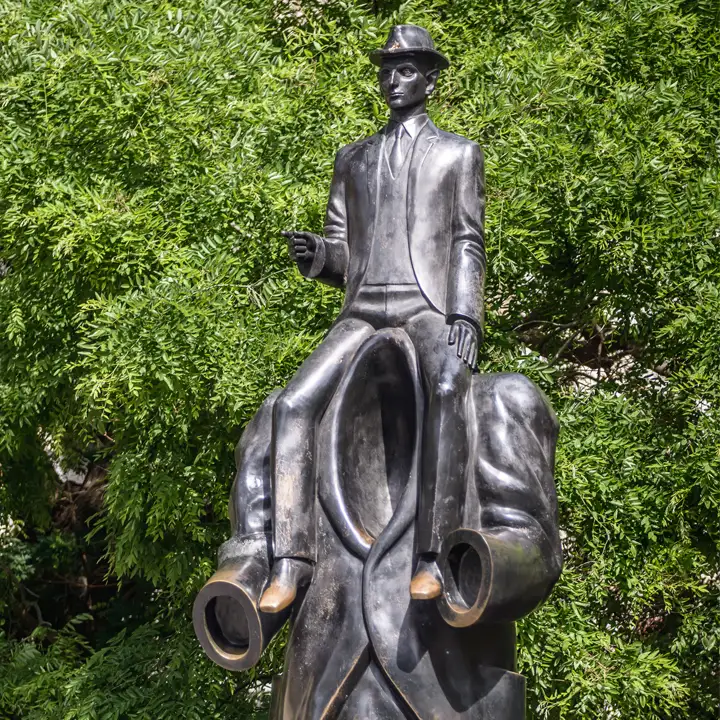
Day 19
Prague
Day 19
Prague



Morning/Mid-Day
Jewish Quarter
Jews have lived in Prague since its beginnings in the 10th century and have endowed it with a rich heritage. The ghetto was created in the 12th century, as Jews were forced to live separately from Christians. Despite persecution, the community prospered, but sadly, only a small minority survived the Nazi occupation. A lasting legacy remains, including synagogues, architecture, and a fascinating cemetery.

Spanish Synagogue
Discover the synagogue considered by many to be Prague's most beautiful.
Show More

Old-New Synagogue
See the oldest surviving synagogue in Europe and also one of Prague's earliest Gothic buildings.
Show More

Old Jewish Cemetery
Take an unforgettable visit to one of Europe's largest medieval Jewish cemeteries.
Show More

Spanish Synagogue
Discover the synagogue considered by many to be Prague's most beautiful.
Show More

Old-New Synagogue
See the oldest surviving synagogue in Europe and also one of Prague's earliest Gothic buildings.
Show More

Old Jewish Cemetery
Take an unforgettable visit to one of Europe's largest medieval Jewish cemeteries.
Show More

Spanish Synagogue
Discover the synagogue considered by many to be Prague's most beautiful.
Show More
prev
next

Day 19
Prague


Spanish Synagogue
 Highlight of Jewish Quarter
Highlight of Jewish QuarterDiscover the synagogue considered by many to be Prague's most beautiful.
Completed in 1868, the Spanish Synagogue is the newest synagogue in Prague's Jewish Quarter, but happens to be built on the site of the former Oldest Synagogue in Prague. It is built in a stunning Spanish Moorish style as a symbol of the flowering of the Jewish culture which occurred under Muslim rule on the Iberian Peninsula.

Old-New Synagogue
 Highlight of Jewish Quarter
Highlight of Jewish QuarterSee the oldest surviving synagogue in Europe and also one of Prague's earliest Gothic buildings.
When built it was Prague’s newest synagogue, but over time became its oldest – hence the “Old-New”. A beautiful ark holds the Torah and legend says its attic is the hiding place of the legendary clay Golem.

Old Jewish Cemetery
 Highlight of Jewish Quarter
Highlight of Jewish QuarterTake an unforgettable visit to one of Europe's largest medieval Jewish cemeteries.
As the Jewish Ghetto was quite cramped, there was no room to expand the cemetery. Unable to acquire further land, and not wishing to dishonor ancestors through the demolition of existing graves, Prague's Jews buried their loved ones in multiple levels. Gravestones are packed in tightly and in some areas the burials reach 12 layers!

Spanish Synagogue
 Highlight of Jewish Quarter
Highlight of Jewish QuarterDiscover the synagogue considered by many to be Prague's most beautiful.
Completed in 1868, the Spanish Synagogue is the newest synagogue in Prague's Jewish Quarter, but happens to be built on the site of the former Oldest Synagogue in Prague. It is built in a stunning Spanish Moorish style as a symbol of the flowering of the Jewish culture which occurred under Muslim rule on the Iberian Peninsula.

Old-New Synagogue
 Highlight of Jewish Quarter
Highlight of Jewish QuarterSee the oldest surviving synagogue in Europe and also one of Prague's earliest Gothic buildings.
When built it was Prague’s newest synagogue, but over time became its oldest – hence the “Old-New”. A beautiful ark holds the Torah and legend says its attic is the hiding place of the legendary clay Golem.

Old Jewish Cemetery
 Highlight of Jewish Quarter
Highlight of Jewish QuarterTake an unforgettable visit to one of Europe's largest medieval Jewish cemeteries.
As the Jewish Ghetto was quite cramped, there was no room to expand the cemetery. Unable to acquire further land, and not wishing to dishonor ancestors through the demolition of existing graves, Prague's Jews buried their loved ones in multiple levels. Gravestones are packed in tightly and in some areas the burials reach 12 layers!

Spanish Synagogue
 Highlight of Jewish Quarter
Highlight of Jewish QuarterDiscover the synagogue considered by many to be Prague's most beautiful.
Completed in 1868, the Spanish Synagogue is the newest synagogue in Prague's Jewish Quarter, but happens to be built on the site of the former Oldest Synagogue in Prague. It is built in a stunning Spanish Moorish style as a symbol of the flowering of the Jewish culture which occurred under Muslim rule on the Iberian Peninsula.
prev
next


Day 20
Prague
Day 20
Prague




Morning/Mid-Day
Vyšehrad Fortress
The castle of Vyšehrad was the seat of Bohemia's kings from the 11th to the 12th centuries. Due to its strategic position on a hill overlooking the Vltava River and Prague, it became an important army garrison in the 17th century, and it was transformed into a fortress with huge walls, gates, and ramparts. Walking along these ramparts will offer you wonderful views of the city and river. The interior of the fortress is now given over to a pleasant and quiet park which is a favorite of locals.

Vyšehrad Cemetery
Wander in a graveyard where many prominent Czechs are buried, such as famed composers Dvořák & Smětana.
Show More

Fortress Walls Viewpoint
Enjoy stunning city views from atop the fortress walls.
Show More

Brick Gate and Casemates
Venture within the fortress's massive 17th-century walls and gates.
Show More

Vyšehrad Cemetery
Wander in a graveyard where many prominent Czechs are buried, such as famed composers Dvořák & Smětana.
Show More

Fortress Walls Viewpoint
Enjoy stunning city views from atop the fortress walls.
Show More

Brick Gate and Casemates
Venture within the fortress's massive 17th-century walls and gates.
Show More

Vyšehrad Cemetery
Wander in a graveyard where many prominent Czechs are buried, such as famed composers Dvořák & Smětana.
Show More
prev
next

Day 20
Prague

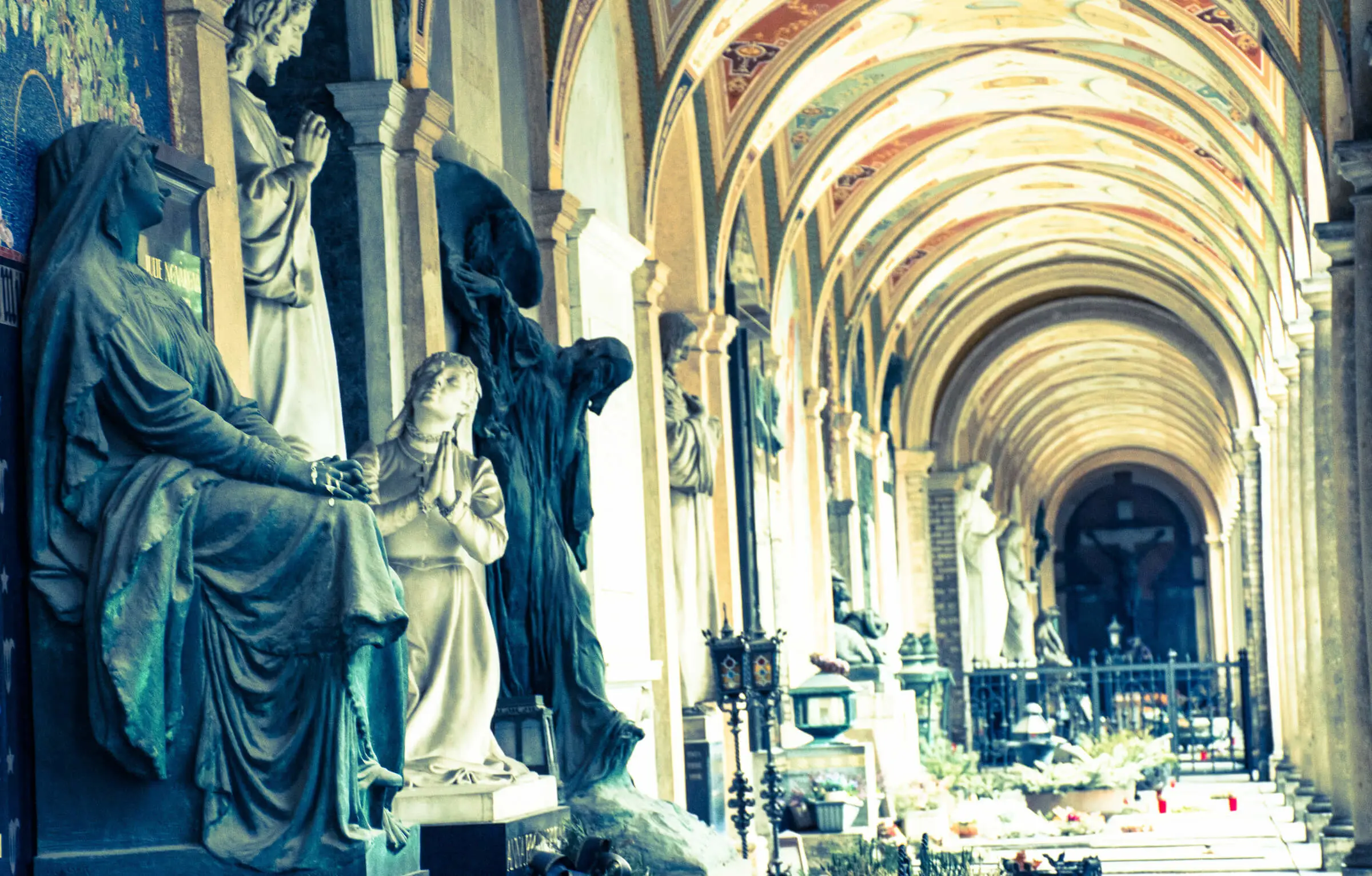
Vyšehrad Cemetery
 Highlight of Vyšehrad Fortress
Highlight of Vyšehrad FortressWander in a graveyard where many prominent Czechs are buried, such as famed composers Dvořák & Smětana.
The cemetery is filled with many tombs which are works of art in themselves, including several arcades with beautiful art-nouveau frescoes. The monumental Slavin tomb is a sort of pantheon of the Czech people, with over 55 prominent persons buried within it. Dvořák and Smětana have their own more modest graves.

Fortress Walls Viewpoint
 Highlight of Vyšehrad Fortress
Highlight of Vyšehrad FortressEnjoy stunning city views from atop the fortress walls.
Prague Castle and most of the city can be seen from above the cavernous Gorlice Hall. A walk along the fortress walls is a delightful experience, as you will enjoy numerous excellent vantage points on all sides of the fortress, enjoying Prague from a different perspective without all the crowds.
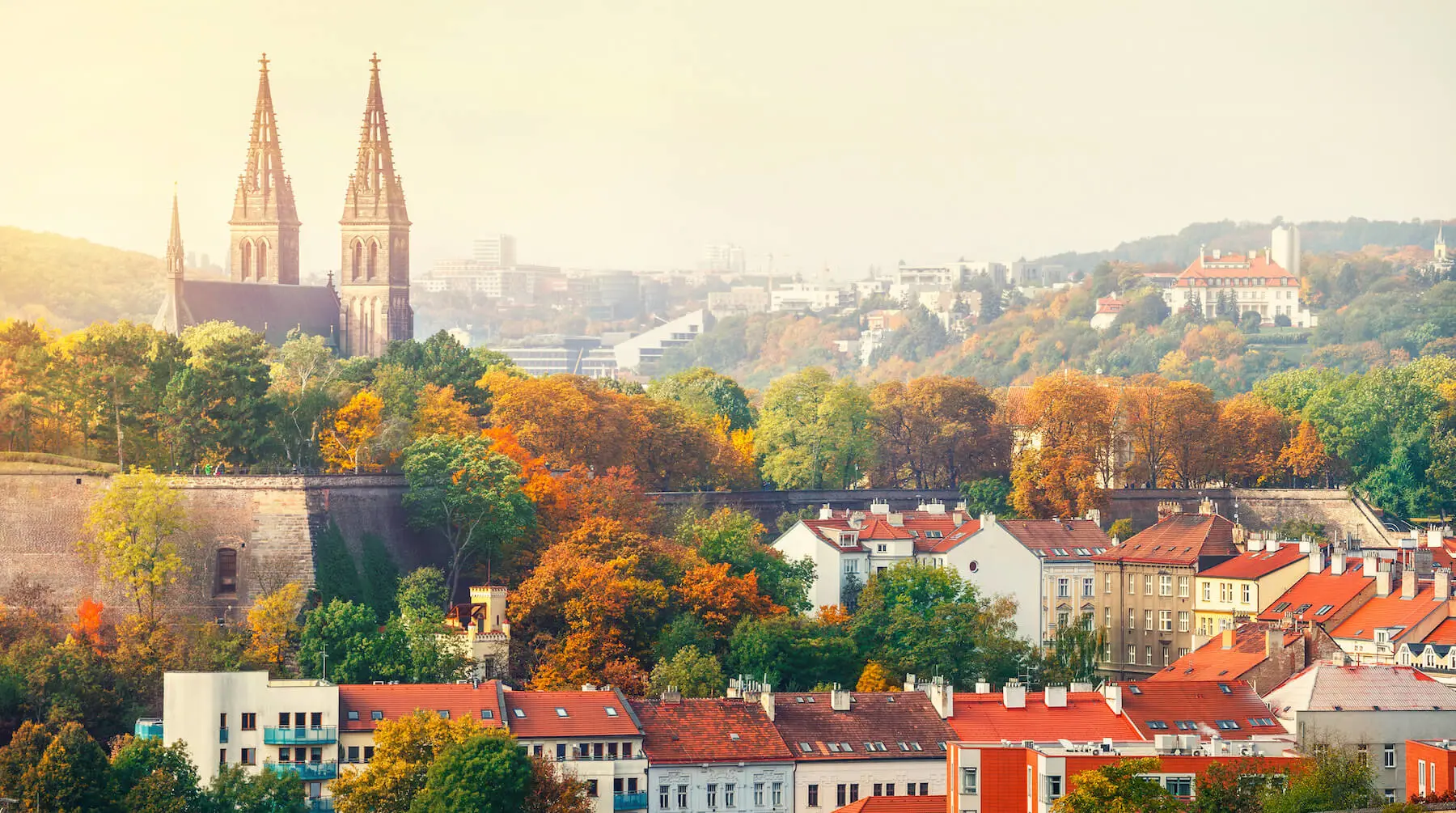
Brick Gate and Casemates
 Highlight of Vyšehrad Fortress
Highlight of Vyšehrad FortressVenture within the fortress's massive 17th-century walls and gates.
A tour through the Brick Gate on the fortress's north side will take you through the narrow underground passageways and casemates of the fortress. You will see a historical exhibit on Vyšehrad as well as the underground Gorlice Hall, where the original statues from the Charles Bridge are stored for safe-keeping (many of the statues on the bridge are copies).

Vyšehrad Cemetery
 Highlight of Vyšehrad Fortress
Highlight of Vyšehrad FortressWander in a graveyard where many prominent Czechs are buried, such as famed composers Dvořák & Smětana.
The cemetery is filled with many tombs which are works of art in themselves, including several arcades with beautiful art-nouveau frescoes. The monumental Slavin tomb is a sort of pantheon of the Czech people, with over 55 prominent persons buried within it. Dvořák and Smětana have their own more modest graves.

Fortress Walls Viewpoint
 Highlight of Vyšehrad Fortress
Highlight of Vyšehrad FortressEnjoy stunning city views from atop the fortress walls.
Prague Castle and most of the city can be seen from above the cavernous Gorlice Hall. A walk along the fortress walls is a delightful experience, as you will enjoy numerous excellent vantage points on all sides of the fortress, enjoying Prague from a different perspective without all the crowds.

Brick Gate and Casemates
 Highlight of Vyšehrad Fortress
Highlight of Vyšehrad FortressVenture within the fortress's massive 17th-century walls and gates.
A tour through the Brick Gate on the fortress's north side will take you through the narrow underground passageways and casemates of the fortress. You will see a historical exhibit on Vyšehrad as well as the underground Gorlice Hall, where the original statues from the Charles Bridge are stored for safe-keeping (many of the statues on the bridge are copies).

Vyšehrad Cemetery
 Highlight of Vyšehrad Fortress
Highlight of Vyšehrad FortressWander in a graveyard where many prominent Czechs are buried, such as famed composers Dvořák & Smětana.
The cemetery is filled with many tombs which are works of art in themselves, including several arcades with beautiful art-nouveau frescoes. The monumental Slavin tomb is a sort of pantheon of the Czech people, with over 55 prominent persons buried within it. Dvořák and Smětana have their own more modest graves.
prev
next


Day 21
Depart Prague
Day 21
Depart Prague

To Be Determined
Taxi Transfer to Airport

Day 21
Depart Prague


What's Included In Peaks & Palaces in Central Europe Trip

Pre-Paid Tours and Activities:
- Private Introductory tour of the Zurich Old Town
- Guided Walk Tour of Historic Munich
- Guided Walking Tour of Salzburg
- Guided Walk through Vienna's Inner City
- Prague Castle & Royal Route Guided Walk
- City Card for Munich, including discounts to many popular attractions

Pre-Paid Transportation:
- 2nd Class Train Tickets from Interlaken to Zurich
- 2nd Class Train Tickets from Zurich to Munich
- 2nd Class Train Tickets from Munich to Salzburg
- 2nd Class Train Tickets from Salzburg to Vienna
- Bus Tickets from Cesky Krumlov to Prague
- Shuttle Service from Vienna to Cesky Krumlov
- Public Transport Tickets for Munich and Vienna
- Swiss Travel Pass
- Private Transfer from the Zurich Airport
- Private Transfer from the Bus Station in Prague to Your Hotel

Accommodation:
- 2 nights at a hotel of your choice in Zurich
- 3 nights at a hotel of your choice in Interlaken
- 3 nights at a hotel of your choice in Munich
- 4 nights at a hotel of your choice in Salzburg
- 4 nights at a hotel of your choice in Vienna
- 1 nights at a hotel of your choice in Cesky Krumlov
- 3 nights at a hotel of your choice in Prague

Go Real Travel Mobile App:
- Itinerary Plan & Reservations Info
- Points of Interest
- Detailed Travel Information
- Maps & Directions
Other Trips You May Like

10 Days
From$1749USD

7 Days
From$1498USD

8 Days
From$1729USD

10 Days
From$2249USD
Perfect Whirlwind Itinerary to Prague, Salzburg, Vienna & Budapest

Czech Republic, Austria, Hungary

14 Days
From$3775USD
Alpine Enchantment: A Family Adventure Through Historic Cities & Scenic Landscapes

Switzerland, Germany, Austria

14 Days
From$2897USD
14-Day Trip to Historic Munich, Salzburg, Vienna, and Prague

Germany, Austria, Czech Republic

10 Days
From$3725USD

14 Days
From$4250USD

14 Days
From$2645USD
Central European Treasures of the Czech Republic, Austria, and Hungary

Czech Republic, Austria, Hungary

10 Days
From$1749USD

7 Days
From$1498USD

8 Days
From$1729USD

10 Days
From$2249USD
Perfect Whirlwind Itinerary to Prague, Salzburg, Vienna & Budapest

Czech Republic, Austria, Hungary

14 Days
From$3775USD
Alpine Enchantment: A Family Adventure Through Historic Cities & Scenic Landscapes

Switzerland, Germany, Austria

14 Days
From$2897USD
14-Day Trip to Historic Munich, Salzburg, Vienna, and Prague

Germany, Austria, Czech Republic

10 Days
From$3725USD

14 Days
From$4250USD

14 Days
From$2645USD
Central European Treasures of the Czech Republic, Austria, and Hungary

Czech Republic, Austria, Hungary
prev
next
Featured Blogs
prev
next
Our Customers Say It Best
Marianne Strydom, Paarl, South Africa
I just wanted to thank you for organizing an amazing trip for me – I packed in so much in such a short period of time and everything was just perfect. The way you do things makes it possible to really get to know the destination, which for me as a travel agent could not have been better. 

Otto Chuy, Los Angeles, California
I am still surprised how everything worked as planned, without a hitch. All instructions in your itinerary were precise and correct. Your suggestions and comments in each of the locations we went to were very helpful. All your guides, without exception, were wonderful and exactly on time. 

Malini Dutta, Boston, Massachusetts
We can't thank you enough for the detailed plans, maps, and suggestions. It really felt that someone was holding our hands and showing us around. We had all the excitement of discovering foreign lands, with none of the problems that can happen while negotiating unfamiliar places. In fact, all the cities felt like home within a few hours of arriving and exploring. 

Bev and Mark Frankel, Williamsburg, Virginia
We could not be more pleased with Go Real Travel! You took the guess work out of things like public transport but still managed to allow us the freedom to tour as we wanted. Our guides were exceptional and every time I saw a Viking Cruise tour of 25 people, I realized the quality experience we were getting with Go Real. 

Marianne Strydom, Paarl, South Africa
I just wanted to thank you for organizing an amazing trip for me – I packed in so much in such a short period of time and everything was just perfect. The way you do things makes it possible to really get to know the destination, which for me as a travel agent could not have been better. 

Otto Chuy, Los Angeles, California
I am still surprised how everything worked as planned, without a hitch. All instructions in your itinerary were precise and correct. Your suggestions and comments in each of the locations we went to were very helpful. All your guides, without exception, were wonderful and exactly on time. 

Malini Dutta, Boston, Massachusetts
We can't thank you enough for the detailed plans, maps, and suggestions. It really felt that someone was holding our hands and showing us around. We had all the excitement of discovering foreign lands, with none of the problems that can happen while negotiating unfamiliar places. In fact, all the cities felt like home within a few hours of arriving and exploring. 

Bev and Mark Frankel, Williamsburg, Virginia
We could not be more pleased with Go Real Travel! You took the guess work out of things like public transport but still managed to allow us the freedom to tour as we wanted. Our guides were exceptional and every time I saw a Viking Cruise tour of 25 people, I realized the quality experience we were getting with Go Real. 



Explore cities in more detail

Salzburg
You've probably heard this before— the city of Salzburg is straight out of a fairytale. Nestled in the mountains, this romantic city's Baroque architecture with colorful domes and spires is especially striking against the ancient fortress and Austrian Alpine backdrop. If you're looking for an amazing view, climb up to Hohensalzburg Fortress, Central Europe's largest intact fortress, for a jaw-dropping panorama of the city backed by misty mountains. Perhaps most famous for being the birthplace of the renowned composer Wolfgang Amadeus Mozart and the filming location for the classic The Sound of Music, this city has much to offer. Salzburg has become an important artistic and cultural center, featuring magnificent concert halls that uphold the city's tradition of classical music every day of the year, as well as acclaimed art exhibitions and museums. If you do it right, your visit to Salzburg will immerse you in the city's unforgettable atmosphere and keep you coming back for more.

Learn About Salzburg
Build Salzburg Trip
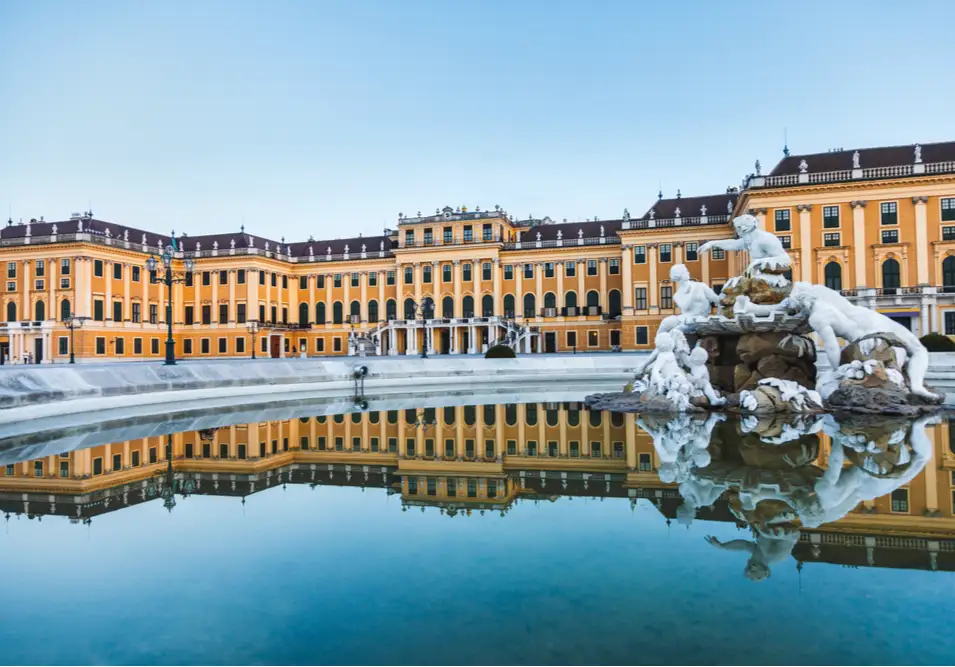
Vienna
Artistic and musical, historical and elegant, Vienna is the definition of class. The seat of the Habsburg monarchy for over six centuries, it's no wonder this city is still fit for royalty. Baroque buildings and imperial palaces dominate the cityscape, while locals stride gracefully through the streets, likely on their way to a classical music concert or art exhibition. Visitors from all over the world flock to Schonbrunn Palace, historical museums, and local eateries for authentic Viennese schnitzel. Vienna is also home to world-class wining and dining. Famous dishes include Wiener schnitzel, Tafelspitz (prime boiled beef), and apfelstrudel (apple strudel), all of which pair well with a glass of fine Austrian wine. No matter how long you spend in Vienna, you'll leave with a new appreciation for the finer things in life.

Learn About Vienna
Build Vienna Trip
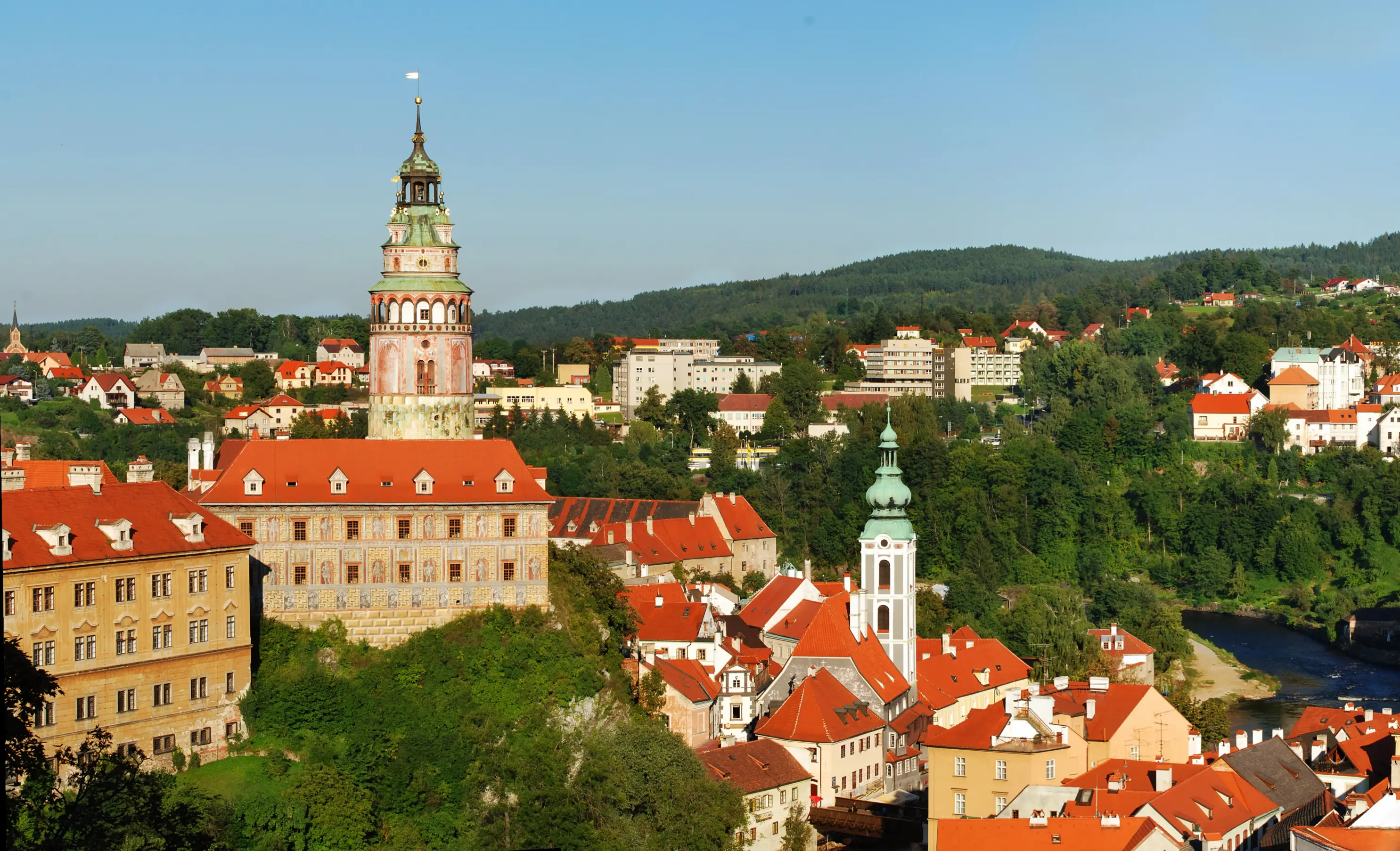
Cesky Krumlov
Cesky Krumlov is a charming little town in South Bohemia. It might be small, but it’s full of whimsical character and mystery. Walking through the narrow streets and across the bridge, the views of the medieval Cesky Krumlov Castle will take your breath away. At night, street musicians serenade visitors on the bridge where you can dance beneath the stars and the watchful eye of the magnificent tower. Dozens of unique local artisan shops, cafes, and restaurants are woven among the winding streets. In the summer, the city is lush with life and greenery. Rafters race down the river, stopping in the center along the way to enjoy a hearty meal before continuing their journey. In the winter, the main square transforms into a magnificent Christmas market and light blankets of snow cover the rooftops. This quaint little town will exceed your expectations and you may never want to leave.

Learn About Cesky Krumlov
Build Cesky Krumlov Trip
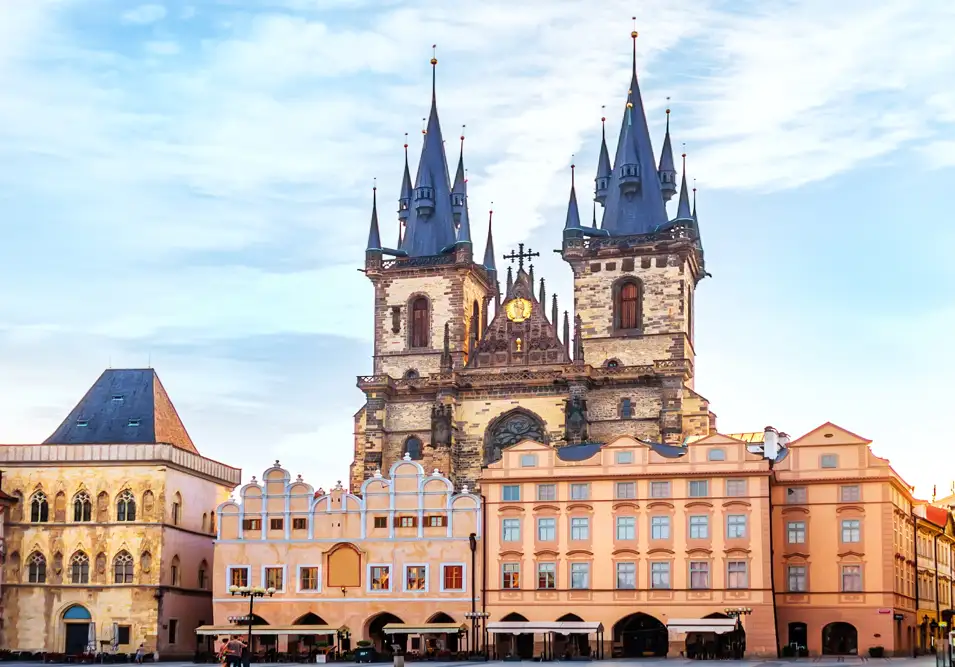
Prague
The city of Prague is indisputably the gem of Central Europe. Full of history, culture, and classic Czech pubs around every corner, Prague is teeming with nooks and crannies just waiting to be discovered. The narrow cobblestone streets and warm red rooftops give the city a homey feel, while the well-preserved medieval architecture transports you back in time. Walking across the Charles Bridge with the view of the Prague Castle will make you feel like you’re living in a fairytale, and you might as well be. As an up-and-coming destination, Prague is a perfect mix of classic and modern. New trendy cafes and bistros are always popping up, and you can always find a group of lively locals chowing down on goulash and quaffing pivo (the best beer in Europe!) at traditional Czech restaurants across the city. The clash of modernity and tradition, preservation and innovation, gives this city a mysterious air that you won’t soon forget.

Learn About Prague
Build Prague Trip
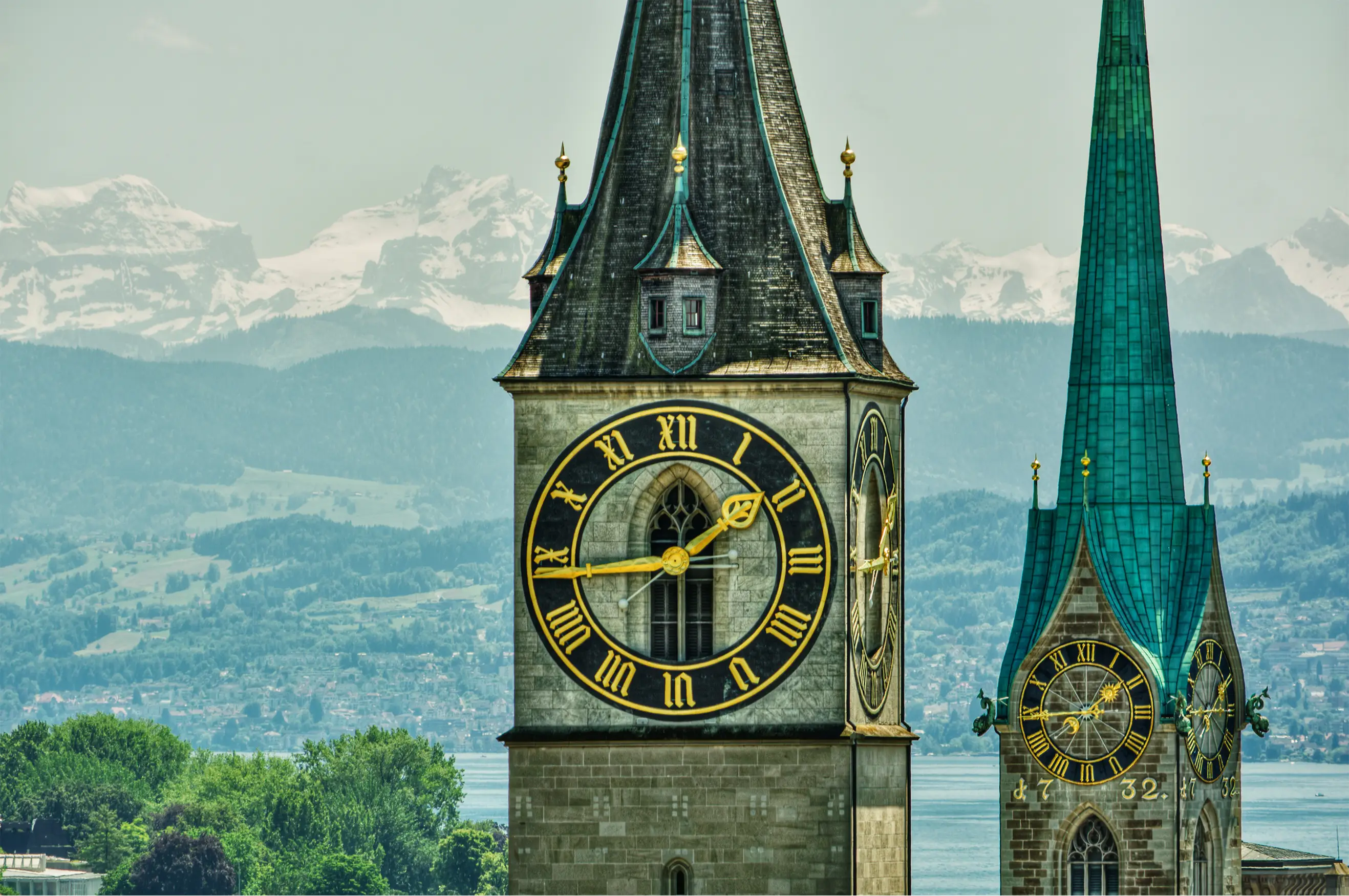
Zurich
Zurich is Switzerland’s biggest city, located in the center of the country’s German-speaking region. It’s this location, superbly connected to almost everywhere else by train and close to an international airport, that makes Zurich an obvious destination for tourists. Well, that’s one of the reasons. There’s also the city’s bevy of bars and restaurants, the lakeside views, and stunning architecture around every corner.Take a stroll down the Bahnhofstrasse, a street known around the world for its unrivaled shopping. Weave through crowds of shoppers as you pass rows of world-famous and exclusive brands. Zurich is a small city, but that just makes it easier to get around. Lindenhof Hill, a slight rise of land in the center, offers views across all of the town. Among the city’s most striking features are the Grossmünster towers, which can also be climbed. This is a proud, sophisticated, and elegant city.

Learn About Zurich
Build Zurich Trip

Interlaken
Located between two bodies of water — Lake Brienz and Lake Thun — Interlaken is the perfect place to explore the serene natural beauty at Switzerland’s heart. Interlaken is a place for those who seek adventure amid spectacular natural surrounds. Rock climbing, canyoning, bungee jumping, and paragliding are just some of the ways to fill a day here, and countless backpackers descend on the town every summer to do all of these and more. Less intense, but no less rewarding, are the many opportunities for hiking, sailing, and swimming. Or, take to the rails. At the nearby Kleine Scheidegg pass, a train runs through the snowy Swiss Alps to the highest train station on the continent. The fun here doesn’t stop at night. After a hard day of adventure, backpackers flock to the town’s many pubs and bars to soothe their aches and pains with steins of beer. Interlaken is a place where fun and excitement reign supreme and somewhere to experience Switzerland’s striking nature in the most thrilling way.

Learn About Interlaken
Build Interlaken Trip
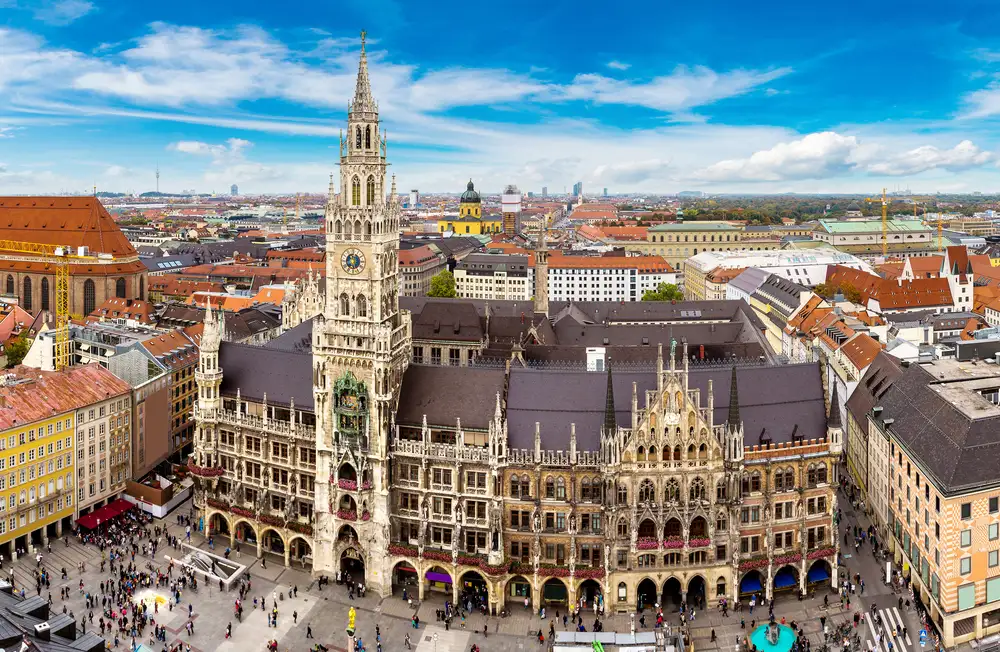
Munich
Arriving in Munich, you would be forgiven for thinking you were on the set of a movie about old Bavaria. At the Old Town beer halls, barmaids laced in dirndl dresses serve up frosty Helles lager, as oom-pah music drifts across the Marienplatz square. Men in lederhosen and checked shirts merrily give toasts as they knock glasses, or steins, as they’re known here. They sit at tables laden with wurst sausage and giant pretzels oozing with herby butter. This is Germany’s Germany, a place where folk traditions never stopped, and the revelry doesn’t either. Even when it isn’t Oktoberfest, the town’s notorious beer-drinking celebration, Munich is always happy to show you a good time. Simply cast your eyes around the lavish, gilded banquet hall at the Munich Residenz, the 13th-century Wittelsbach palace. You’ll see Munich has been impressing guests for centuries. Or, swing by the BMW Museum and check out the classic German cars. They even let you sit inside to test out the new models. At the city’s English Gardens, surfers ride waves on one of the park’s rivers. Munich is filled to the brim with this kind of pure-hearted German fun.

Learn About Munich
Build Munich Trip

Salzburg
You've probably heard this before— the city of Salzburg is straight out of a fairytale. Nestled in the mountains, this romantic city's Baroque architecture with colorful domes and spires is especially striking against the ancient fortress and Austrian Alpine backdrop. If you're looking for an amazing view, climb up to Hohensalzburg Fortress, Central Europe's largest intact fortress, for a jaw-dropping panorama of the city backed by misty mountains. Perhaps most famous for being the birthplace of the renowned composer Wolfgang Amadeus Mozart and the filming location for the classic The Sound of Music, this city has much to offer. Salzburg has become an important artistic and cultural center, featuring magnificent concert halls that uphold the city's tradition of classical music every day of the year, as well as acclaimed art exhibitions and museums. If you do it right, your visit to Salzburg will immerse you in the city's unforgettable atmosphere and keep you coming back for more.

Learn About Salzburg
Build Salzburg Trip

Vienna
Artistic and musical, historical and elegant, Vienna is the definition of class. The seat of the Habsburg monarchy for over six centuries, it's no wonder this city is still fit for royalty. Baroque buildings and imperial palaces dominate the cityscape, while locals stride gracefully through the streets, likely on their way to a classical music concert or art exhibition. Visitors from all over the world flock to Schonbrunn Palace, historical museums, and local eateries for authentic Viennese schnitzel. Vienna is also home to world-class wining and dining. Famous dishes include Wiener schnitzel, Tafelspitz (prime boiled beef), and apfelstrudel (apple strudel), all of which pair well with a glass of fine Austrian wine. No matter how long you spend in Vienna, you'll leave with a new appreciation for the finer things in life.

Learn About Vienna
Build Vienna Trip

Cesky Krumlov
Cesky Krumlov is a charming little town in South Bohemia. It might be small, but it’s full of whimsical character and mystery. Walking through the narrow streets and across the bridge, the views of the medieval Cesky Krumlov Castle will take your breath away. At night, street musicians serenade visitors on the bridge where you can dance beneath the stars and the watchful eye of the magnificent tower. Dozens of unique local artisan shops, cafes, and restaurants are woven among the winding streets. In the summer, the city is lush with life and greenery. Rafters race down the river, stopping in the center along the way to enjoy a hearty meal before continuing their journey. In the winter, the main square transforms into a magnificent Christmas market and light blankets of snow cover the rooftops. This quaint little town will exceed your expectations and you may never want to leave.

Learn About Cesky Krumlov
Build Cesky Krumlov Trip

Prague
The city of Prague is indisputably the gem of Central Europe. Full of history, culture, and classic Czech pubs around every corner, Prague is teeming with nooks and crannies just waiting to be discovered. The narrow cobblestone streets and warm red rooftops give the city a homey feel, while the well-preserved medieval architecture transports you back in time. Walking across the Charles Bridge with the view of the Prague Castle will make you feel like you’re living in a fairytale, and you might as well be. As an up-and-coming destination, Prague is a perfect mix of classic and modern. New trendy cafes and bistros are always popping up, and you can always find a group of lively locals chowing down on goulash and quaffing pivo (the best beer in Europe!) at traditional Czech restaurants across the city. The clash of modernity and tradition, preservation and innovation, gives this city a mysterious air that you won’t soon forget.

Learn About Prague
Build Prague Trip

Zurich
Zurich is Switzerland’s biggest city, located in the center of the country’s German-speaking region. It’s this location, superbly connected to almost everywhere else by train and close to an international airport, that makes Zurich an obvious destination for tourists. Well, that’s one of the reasons. There’s also the city’s bevy of bars and restaurants, the lakeside views, and stunning architecture around every corner.Take a stroll down the Bahnhofstrasse, a street known around the world for its unrivaled shopping. Weave through crowds of shoppers as you pass rows of world-famous and exclusive brands. Zurich is a small city, but that just makes it easier to get around. Lindenhof Hill, a slight rise of land in the center, offers views across all of the town. Among the city’s most striking features are the Grossmünster towers, which can also be climbed. This is a proud, sophisticated, and elegant city.

Learn About Zurich
Build Zurich Trip

Interlaken
Located between two bodies of water — Lake Brienz and Lake Thun — Interlaken is the perfect place to explore the serene natural beauty at Switzerland’s heart. Interlaken is a place for those who seek adventure amid spectacular natural surrounds. Rock climbing, canyoning, bungee jumping, and paragliding are just some of the ways to fill a day here, and countless backpackers descend on the town every summer to do all of these and more. Less intense, but no less rewarding, are the many opportunities for hiking, sailing, and swimming. Or, take to the rails. At the nearby Kleine Scheidegg pass, a train runs through the snowy Swiss Alps to the highest train station on the continent. The fun here doesn’t stop at night. After a hard day of adventure, backpackers flock to the town’s many pubs and bars to soothe their aches and pains with steins of beer. Interlaken is a place where fun and excitement reign supreme and somewhere to experience Switzerland’s striking nature in the most thrilling way.

Learn About Interlaken
Build Interlaken Trip

Munich
Arriving in Munich, you would be forgiven for thinking you were on the set of a movie about old Bavaria. At the Old Town beer halls, barmaids laced in dirndl dresses serve up frosty Helles lager, as oom-pah music drifts across the Marienplatz square. Men in lederhosen and checked shirts merrily give toasts as they knock glasses, or steins, as they’re known here. They sit at tables laden with wurst sausage and giant pretzels oozing with herby butter. This is Germany’s Germany, a place where folk traditions never stopped, and the revelry doesn’t either. Even when it isn’t Oktoberfest, the town’s notorious beer-drinking celebration, Munich is always happy to show you a good time. Simply cast your eyes around the lavish, gilded banquet hall at the Munich Residenz, the 13th-century Wittelsbach palace. You’ll see Munich has been impressing guests for centuries. Or, swing by the BMW Museum and check out the classic German cars. They even let you sit inside to test out the new models. At the city’s English Gardens, surfers ride waves on one of the park’s rivers. Munich is filled to the brim with this kind of pure-hearted German fun.

Learn About Munich
Build Munich Trip

Salzburg
You've probably heard this before— the city of Salzburg is straight out of a fairytale. Nestled in the mountains, this romantic city's Baroque architecture with colorful domes and spires is especially striking against the ancient fortress and Austrian Alpine backdrop. If you're looking for an amazing view, climb up to Hohensalzburg Fortress, Central Europe's largest intact fortress, for a jaw-dropping panorama of the city backed by misty mountains. Perhaps most famous for being the birthplace of the renowned composer Wolfgang Amadeus Mozart and the filming location for the classic The Sound of Music, this city has much to offer. Salzburg has become an important artistic and cultural center, featuring magnificent concert halls that uphold the city's tradition of classical music every day of the year, as well as acclaimed art exhibitions and museums. If you do it right, your visit to Salzburg will immerse you in the city's unforgettable atmosphere and keep you coming back for more.

Learn About Salzburg
Build Salzburg Trip
prev
next


 Map of Your Itinerary Route
Map of Your Itinerary Route
Zoom In to the cities to see your itinerary in more detail


 4.8
4.8 






